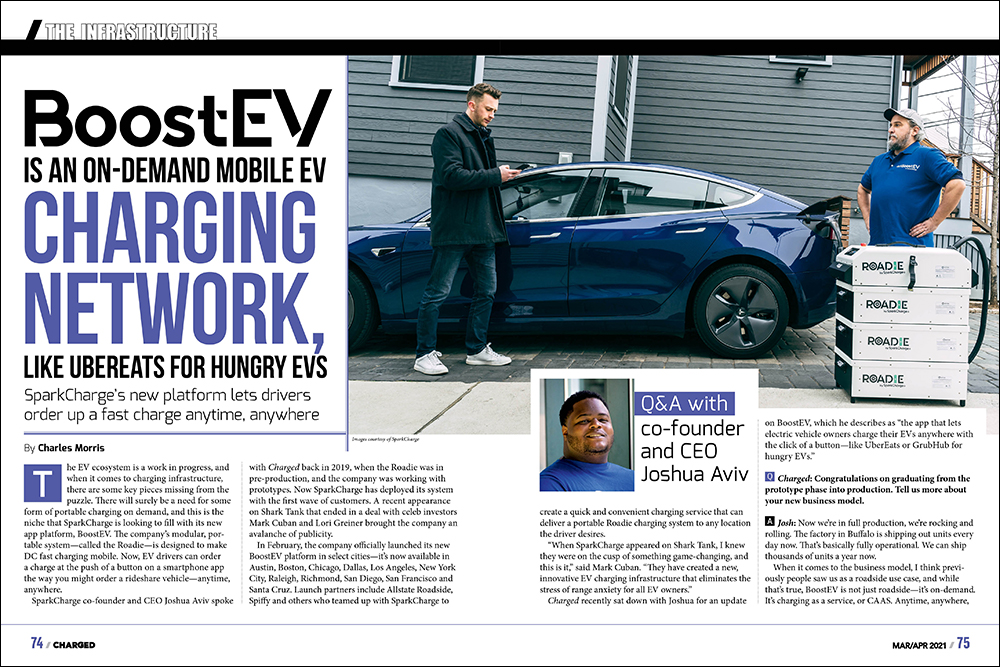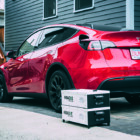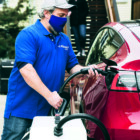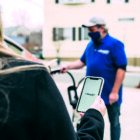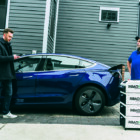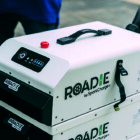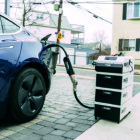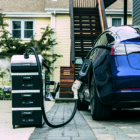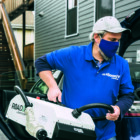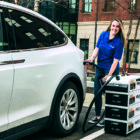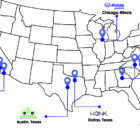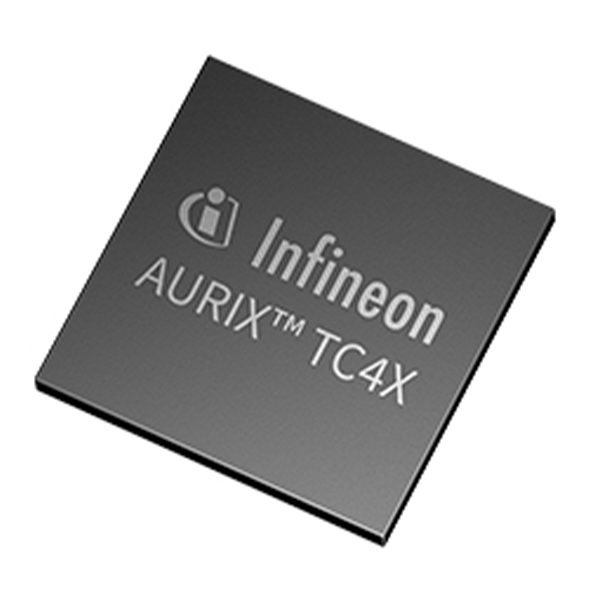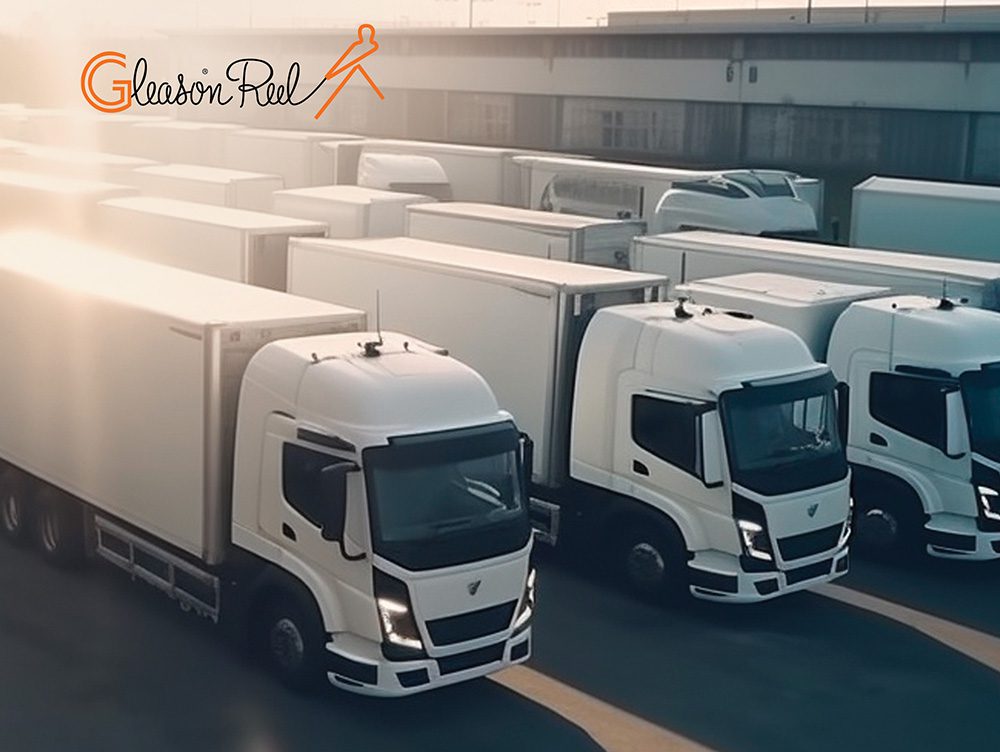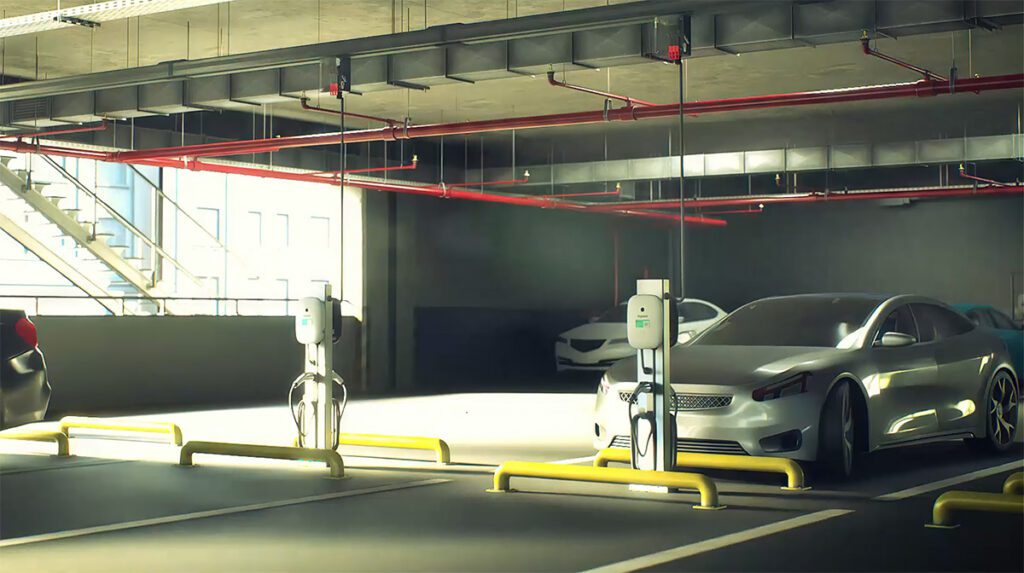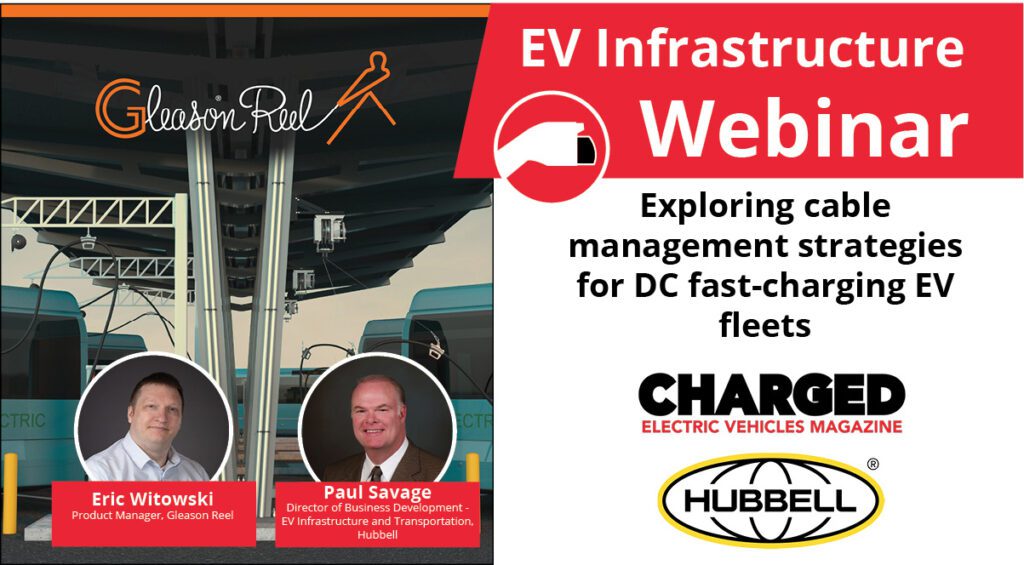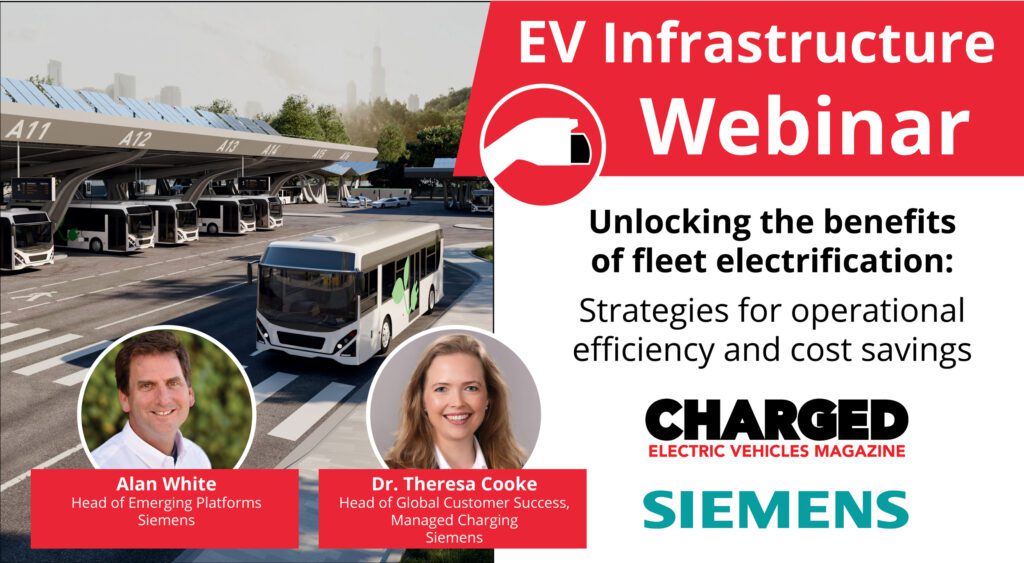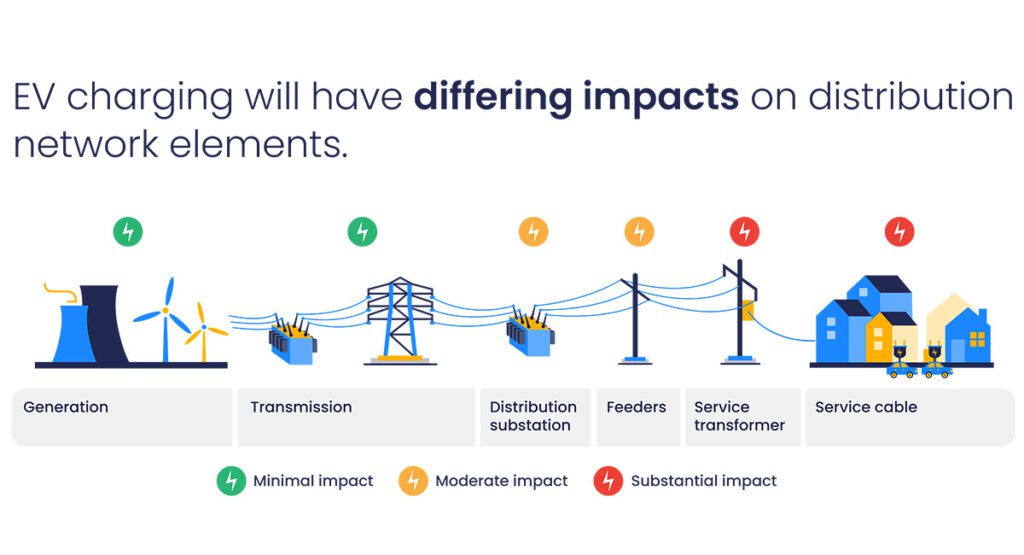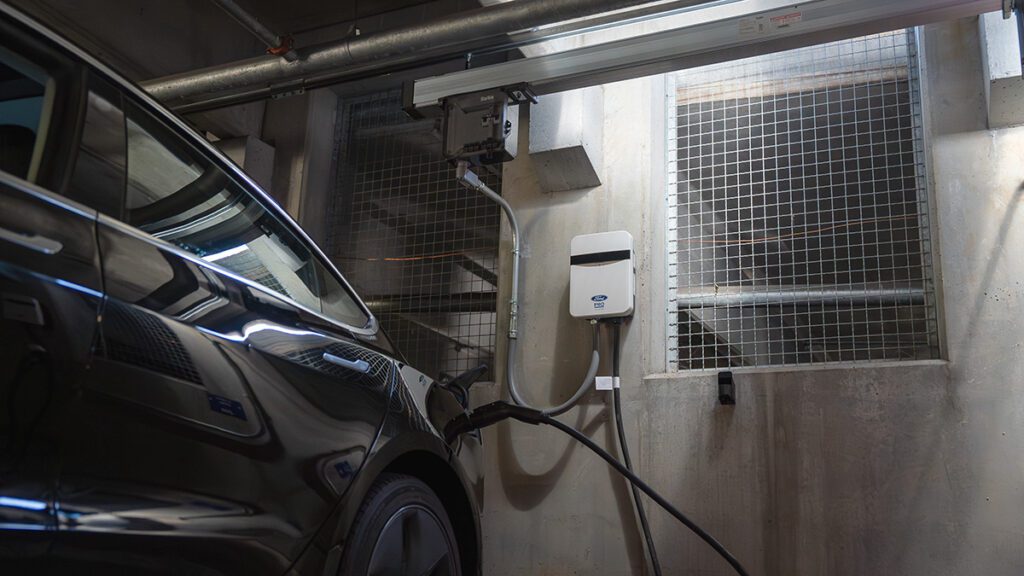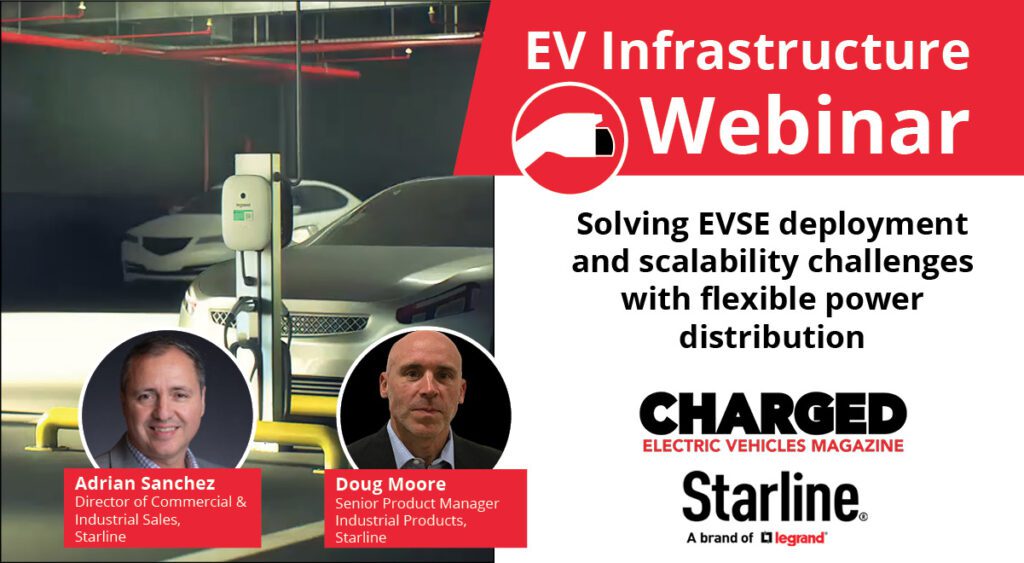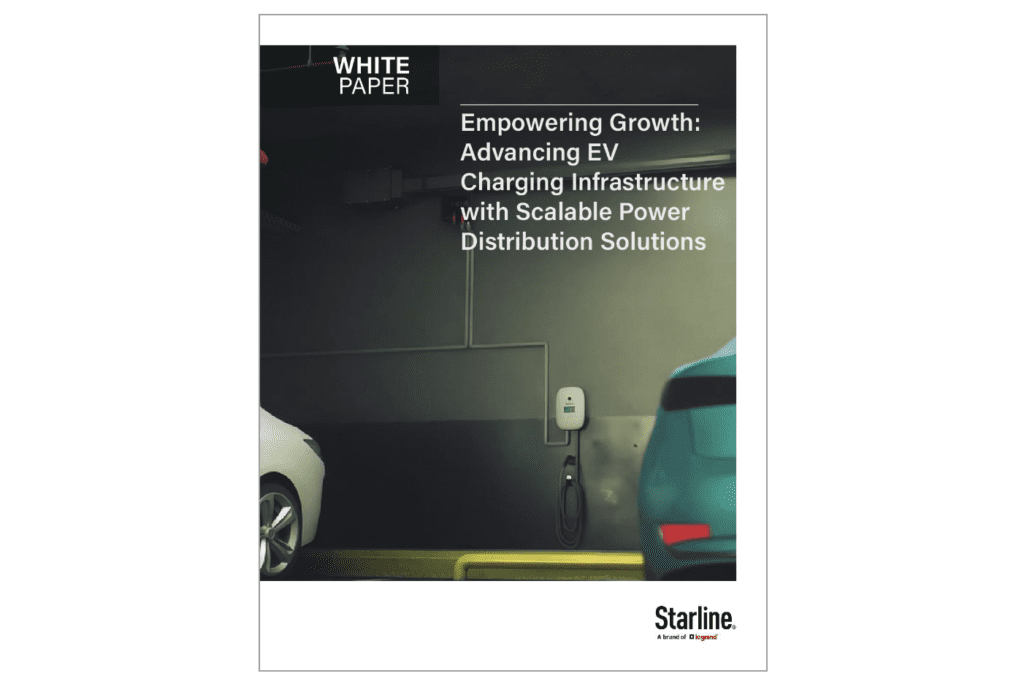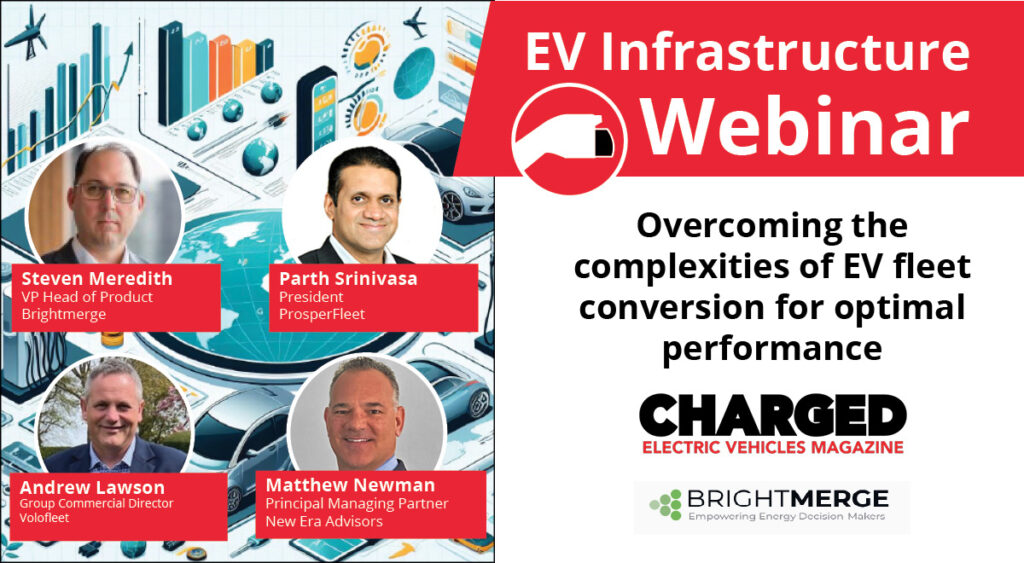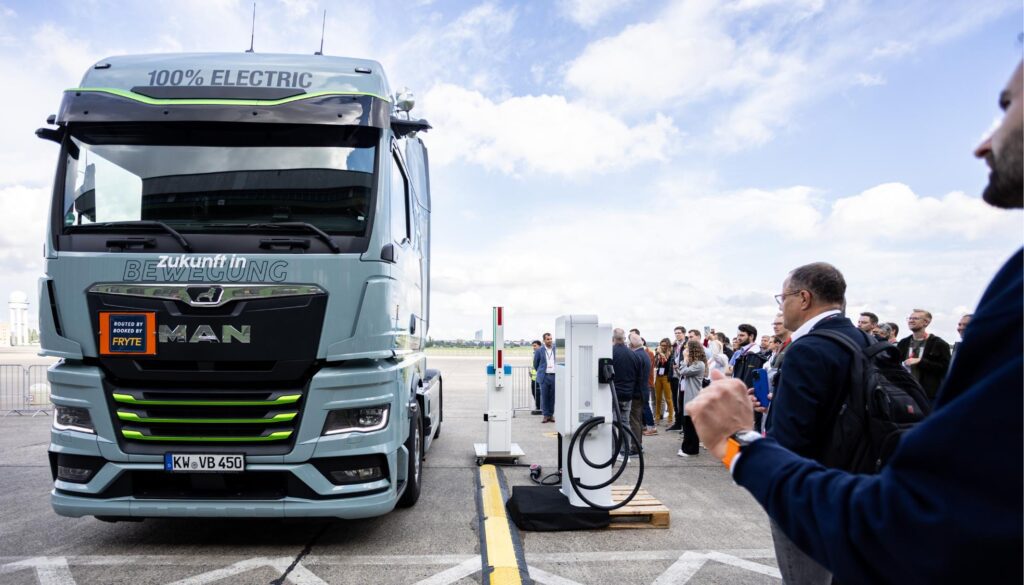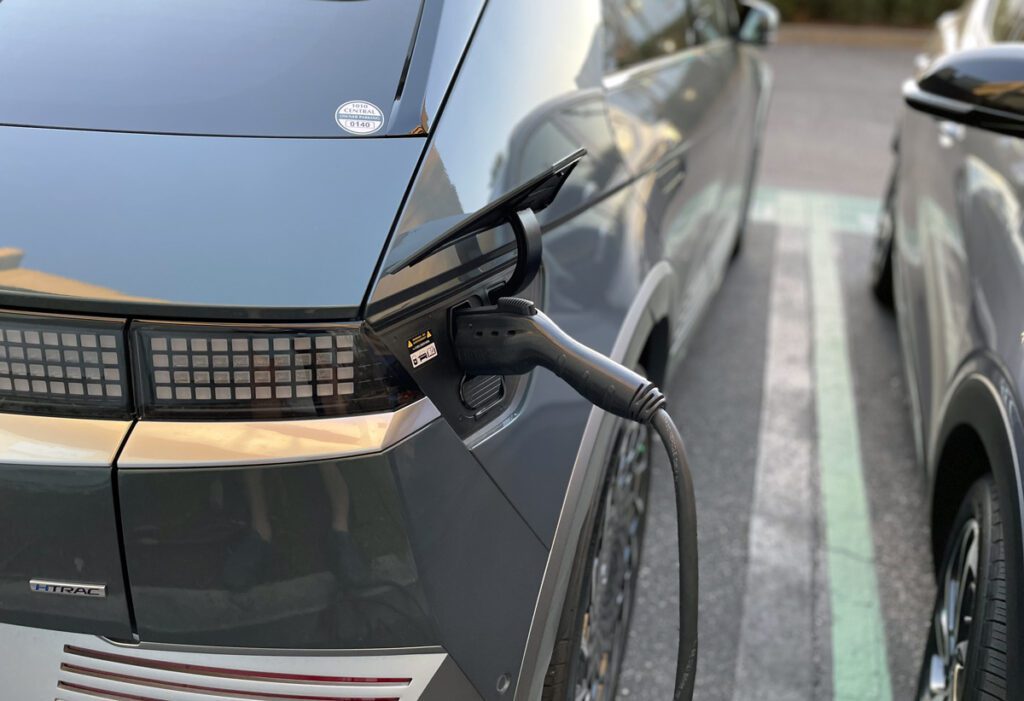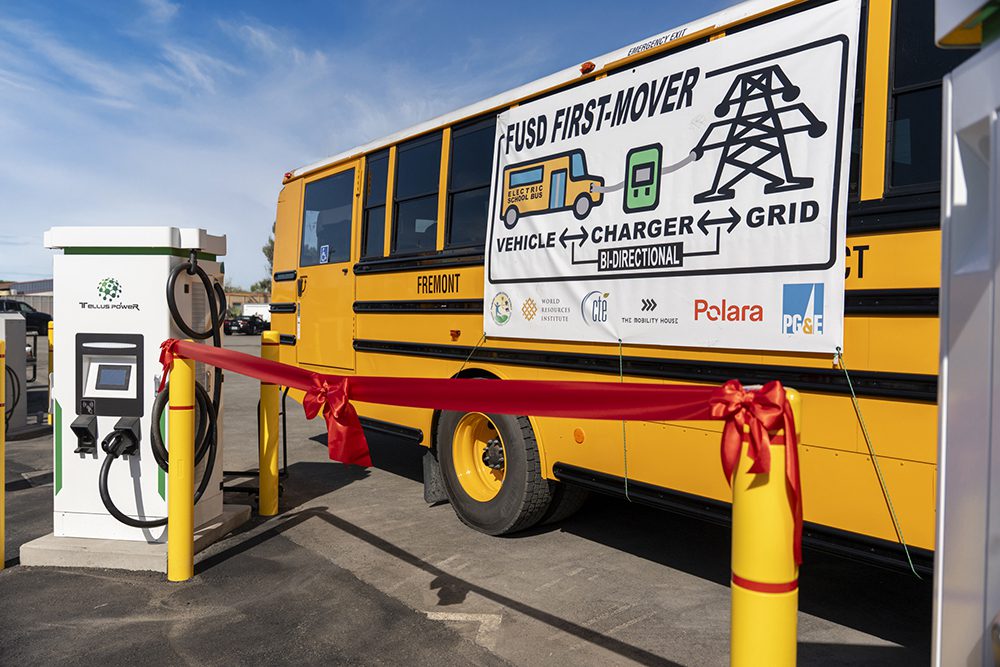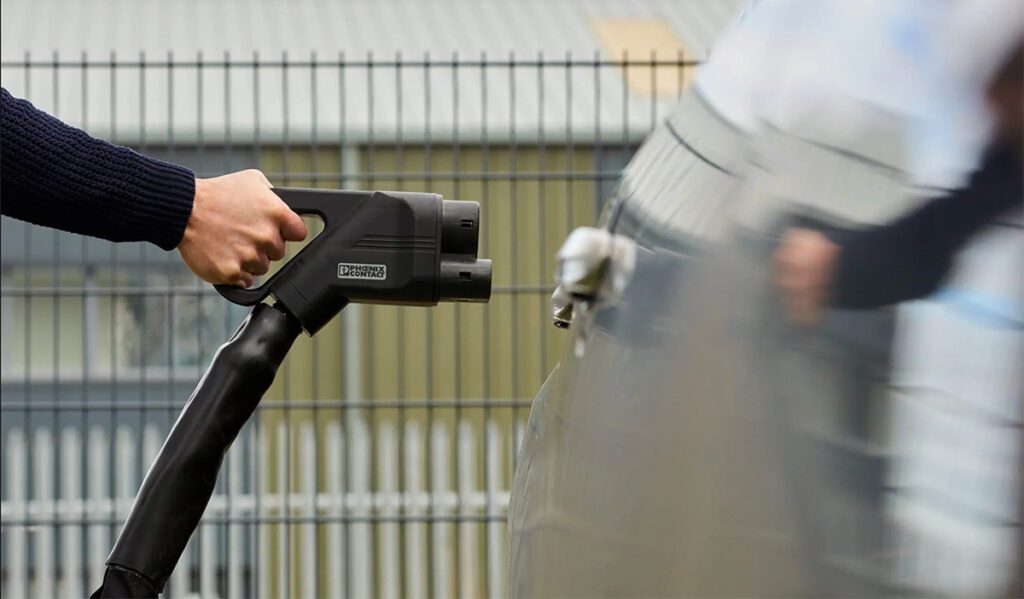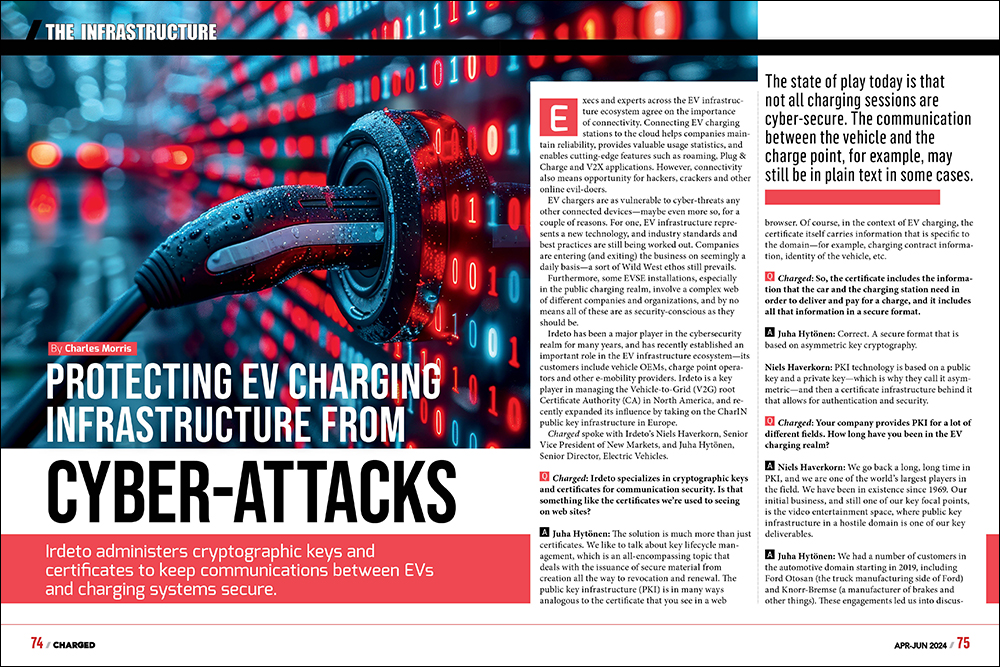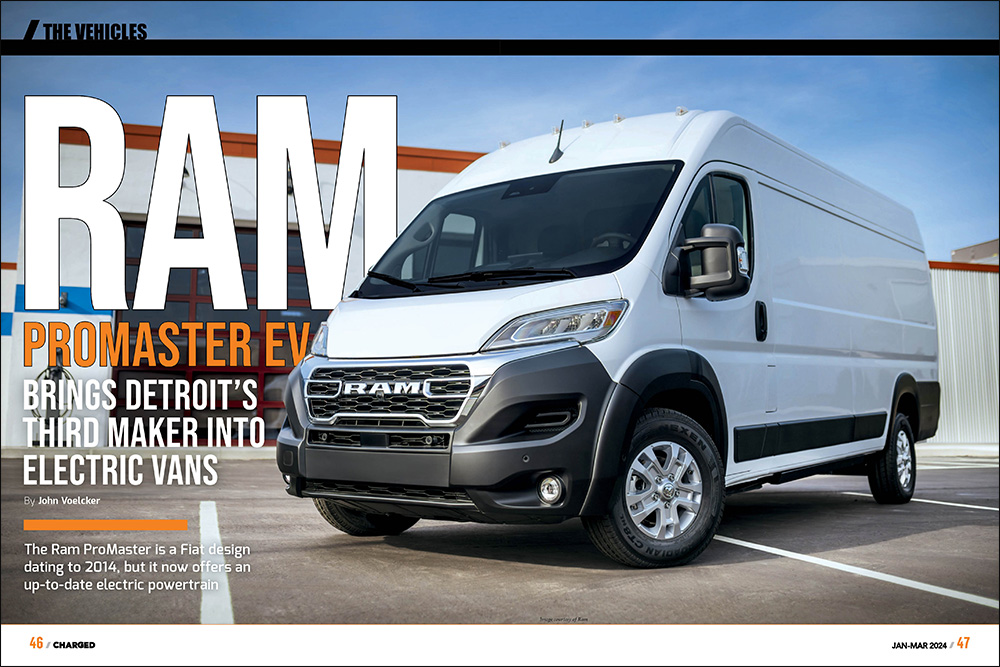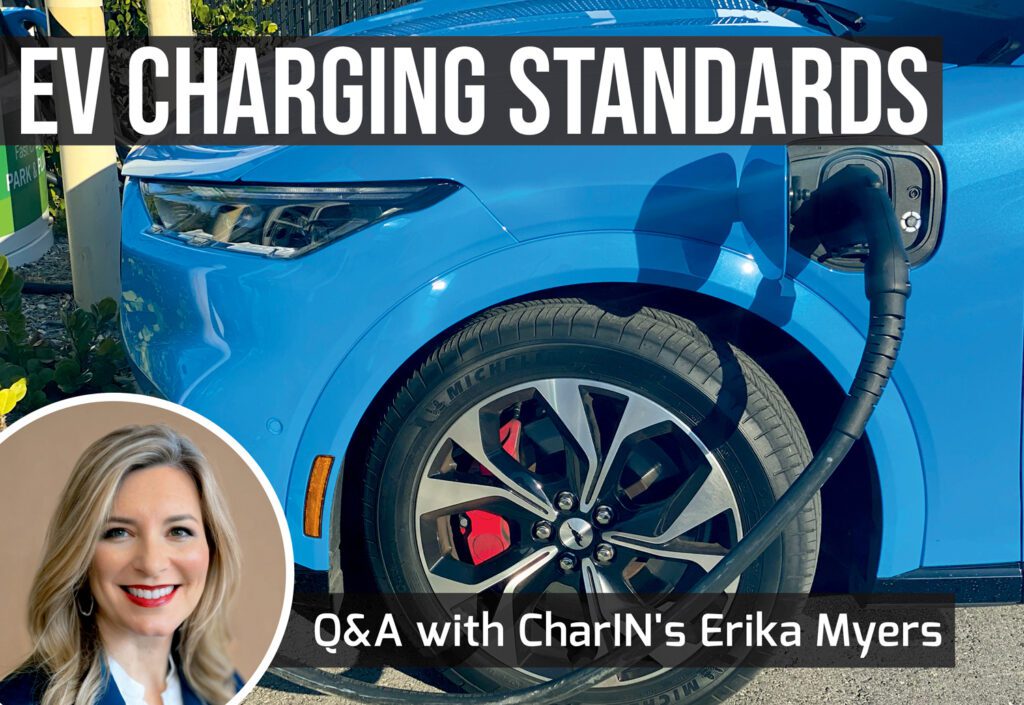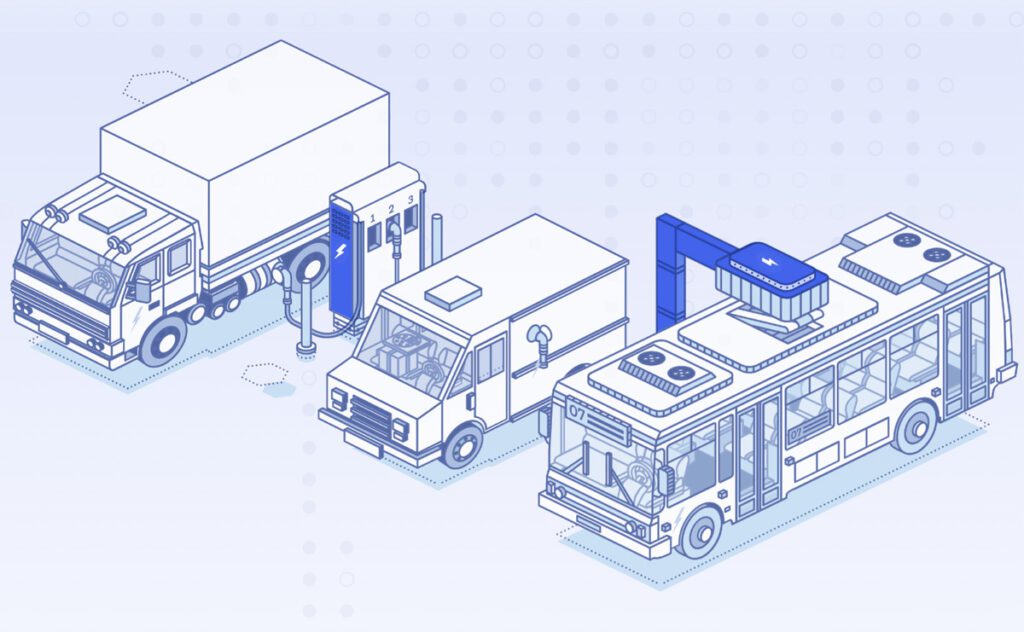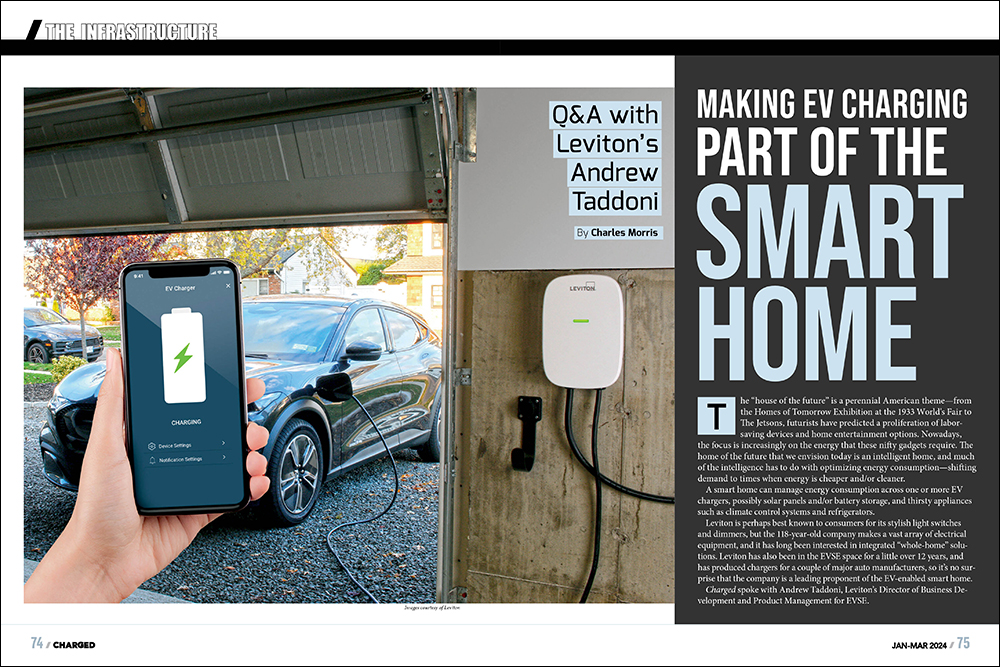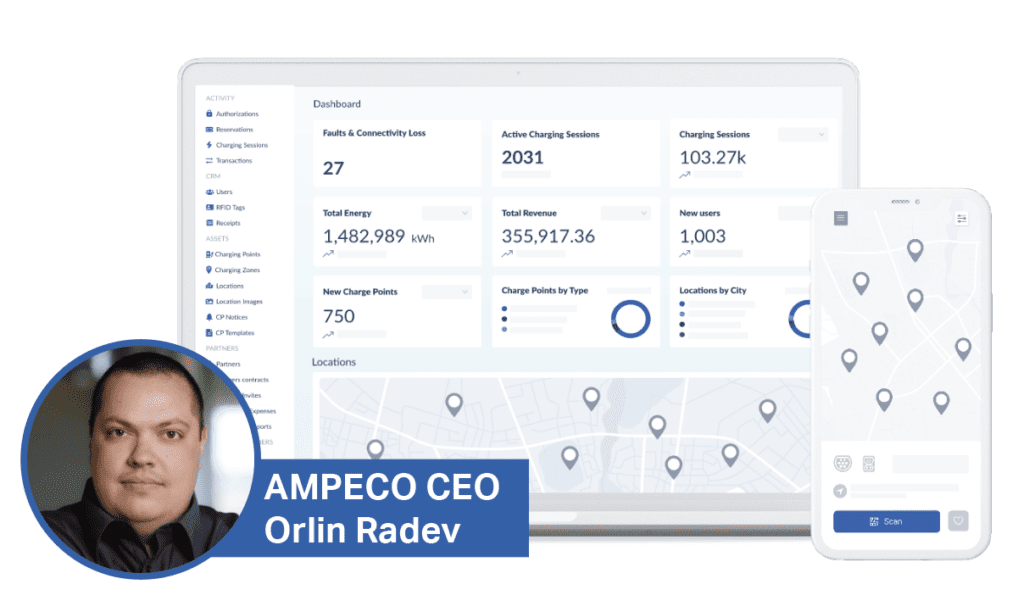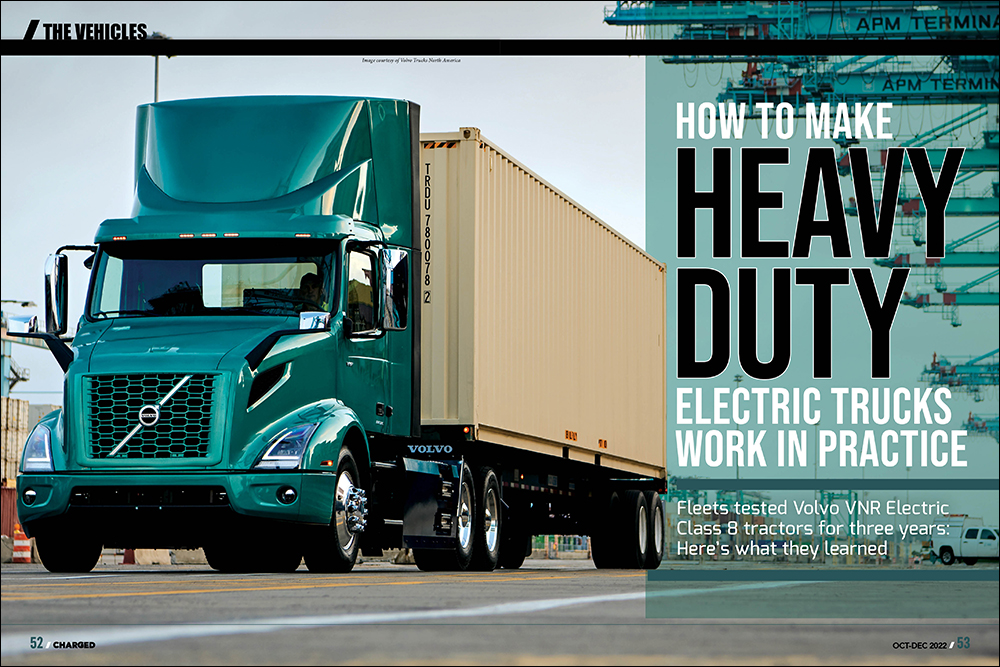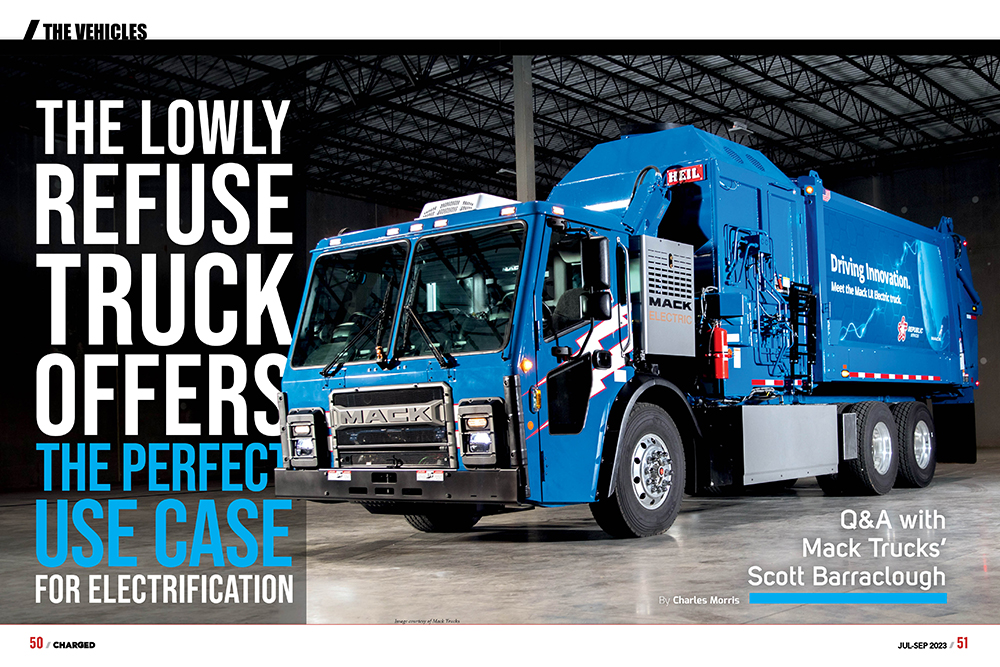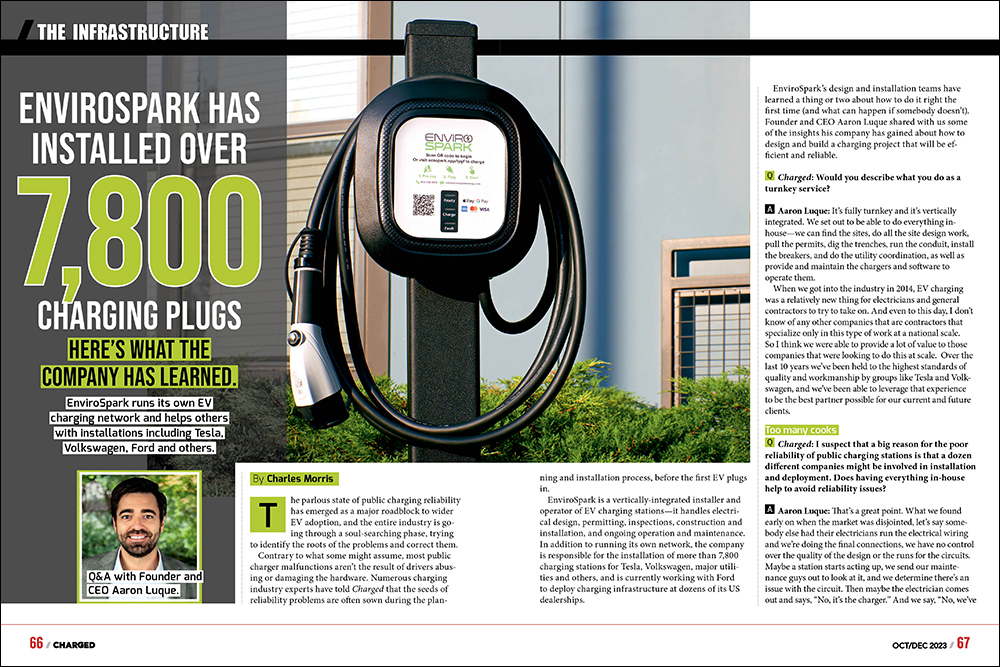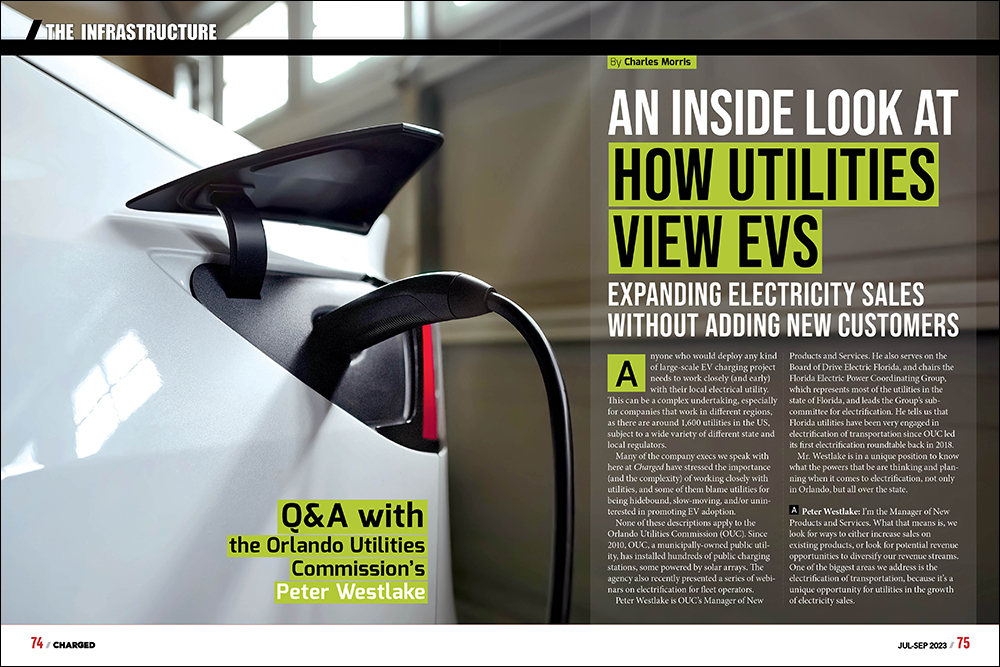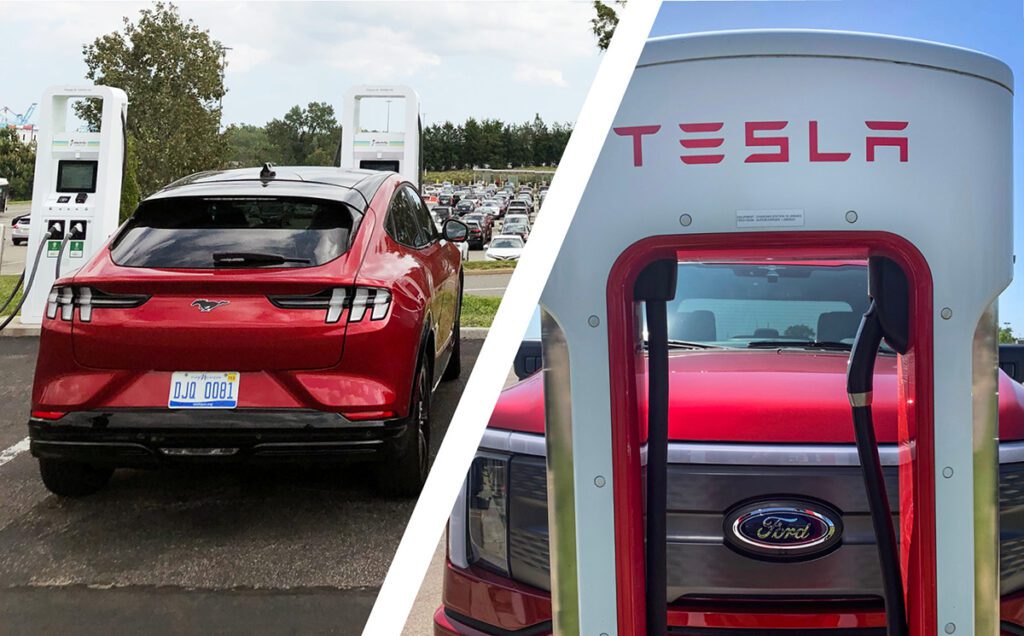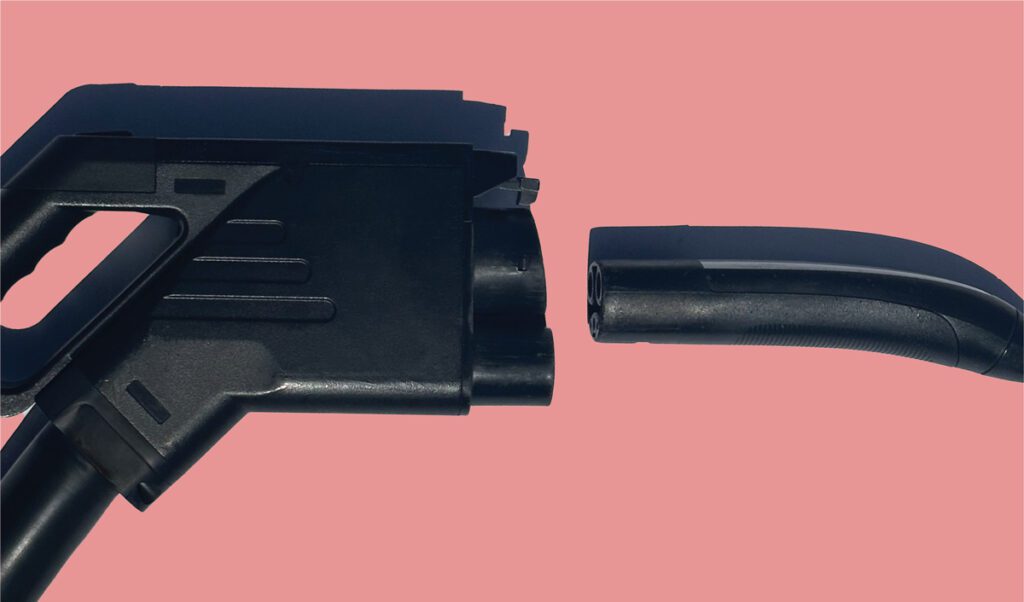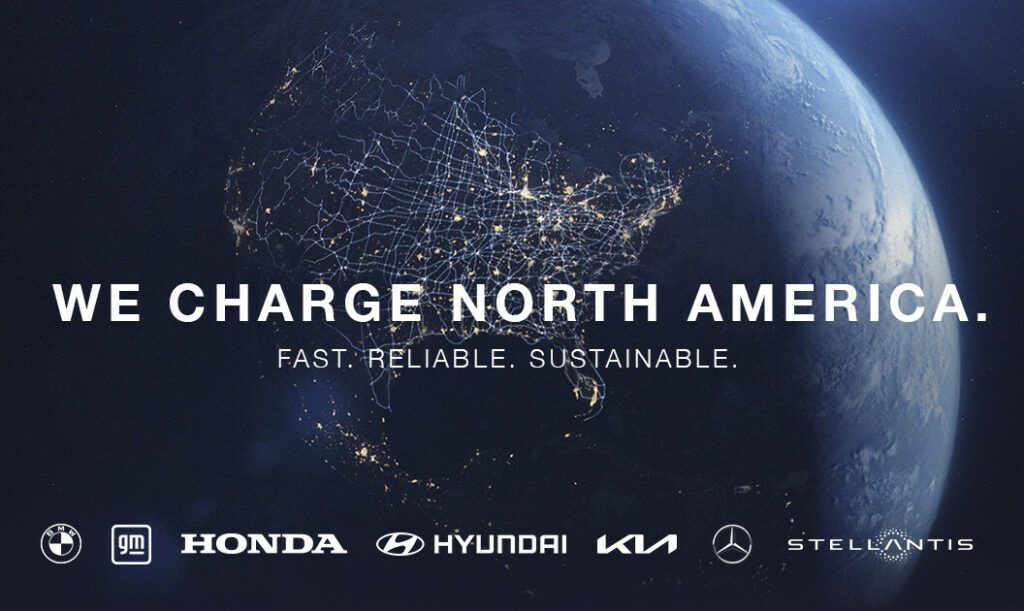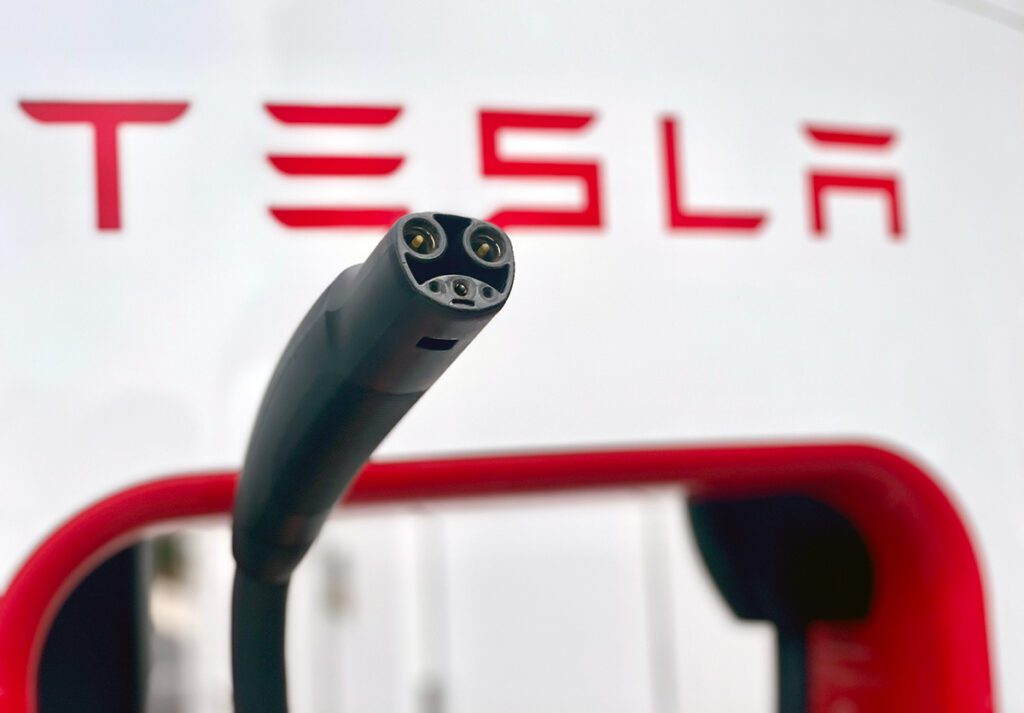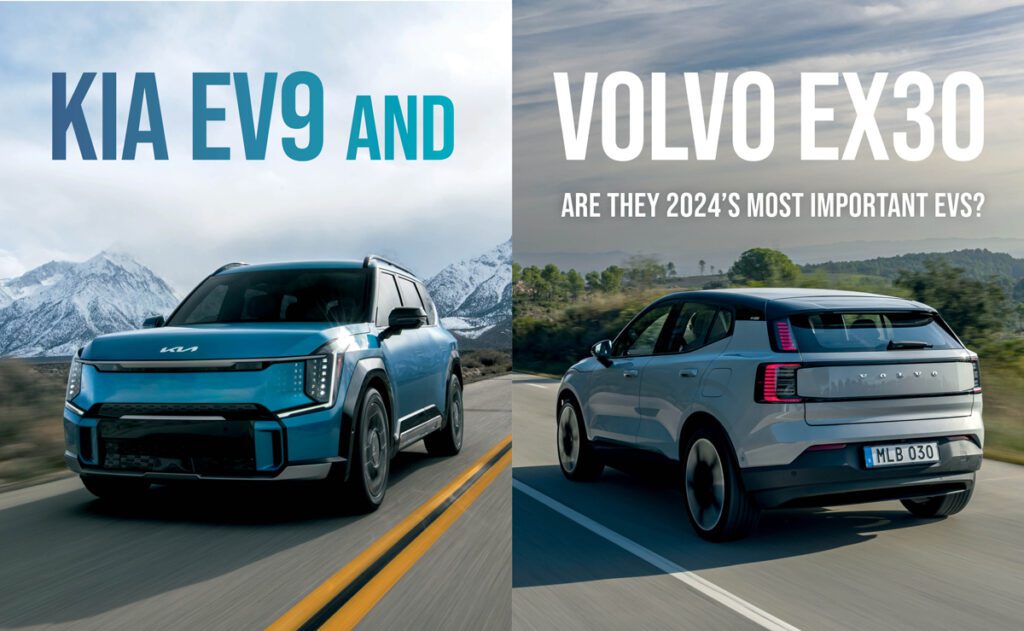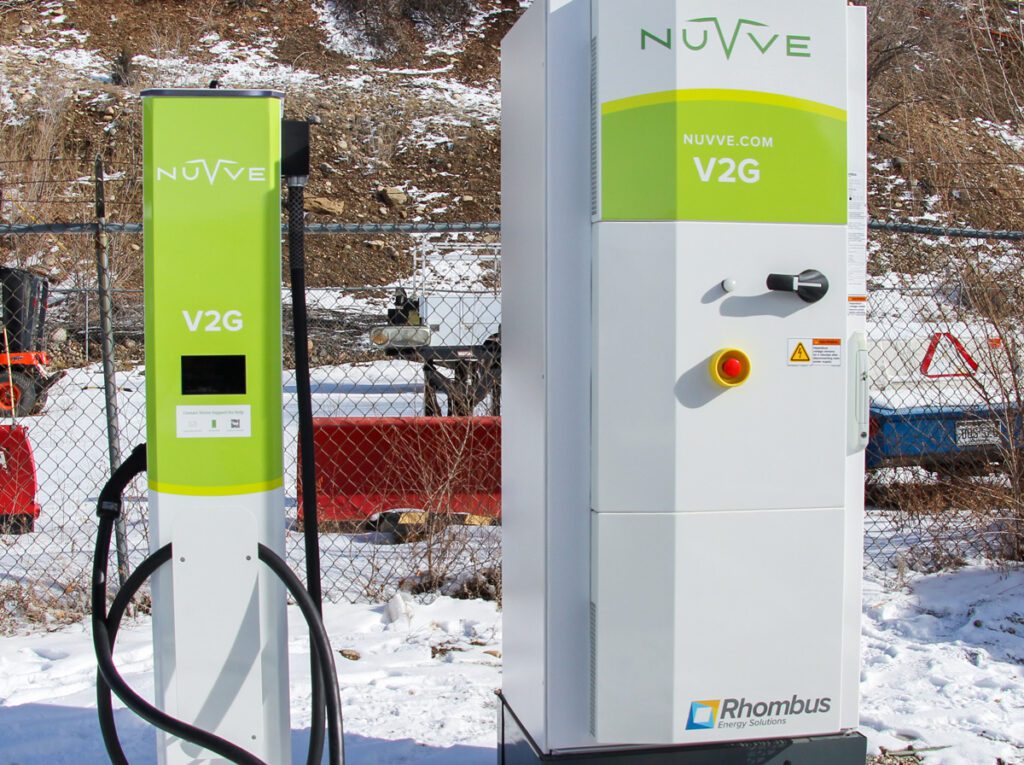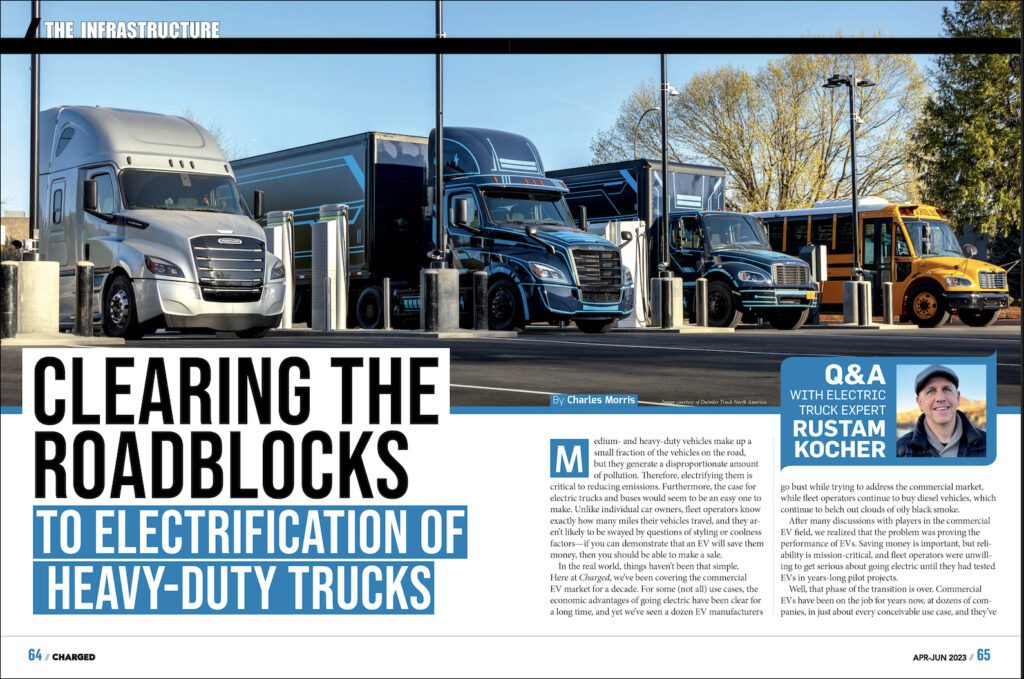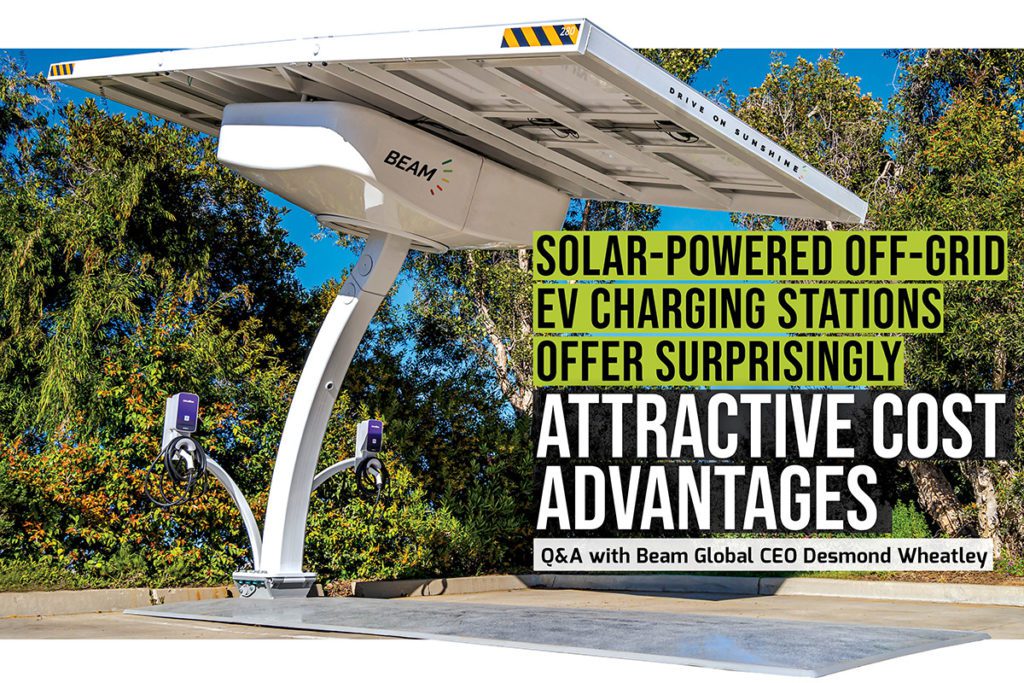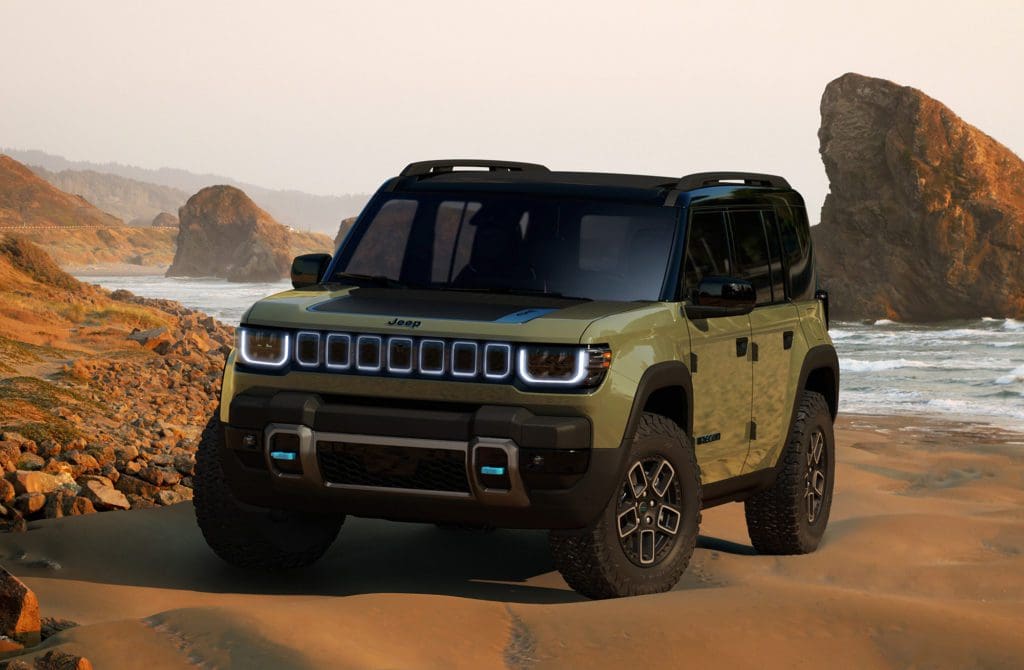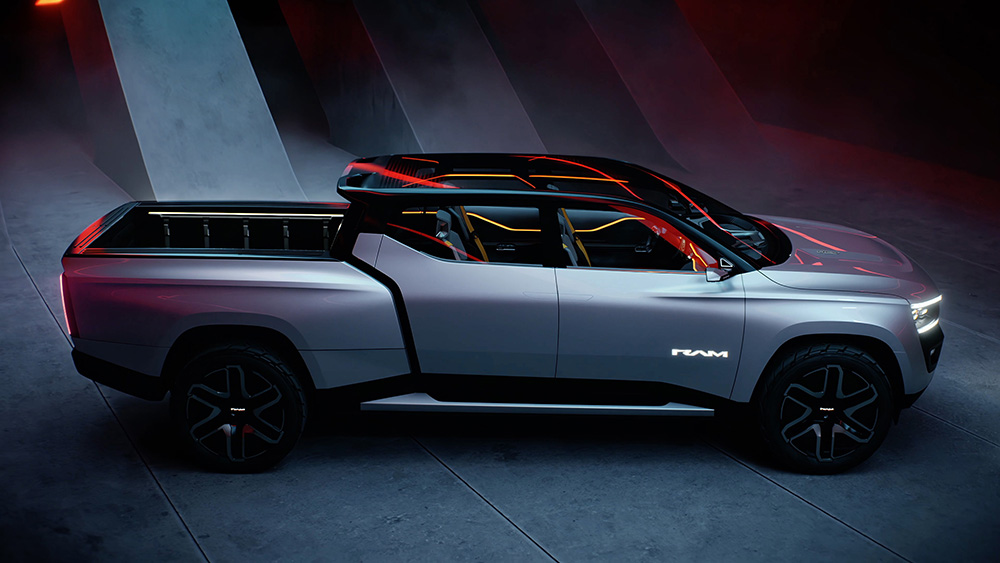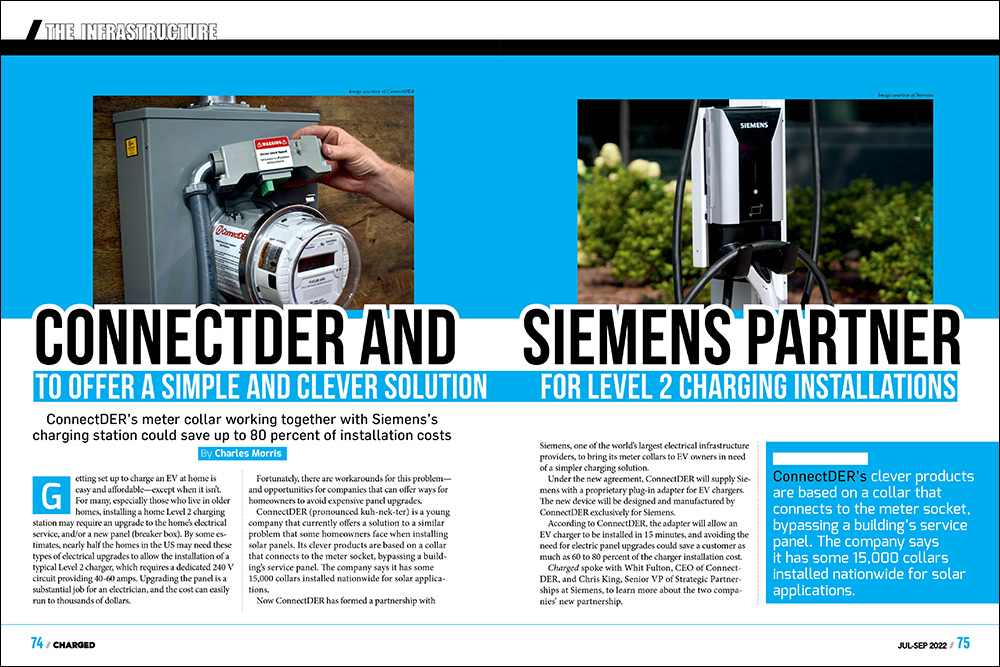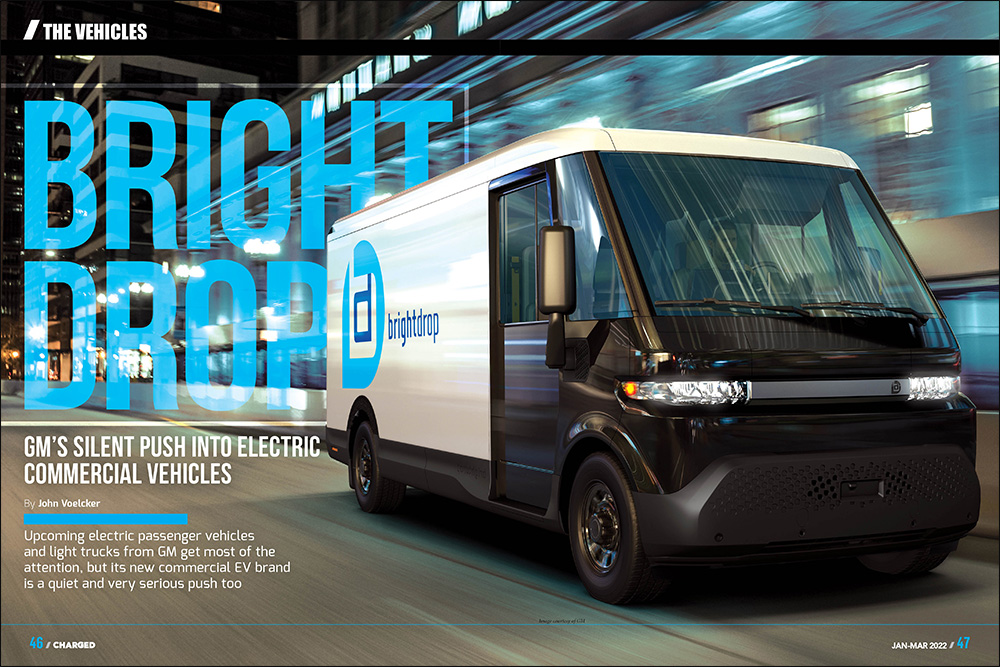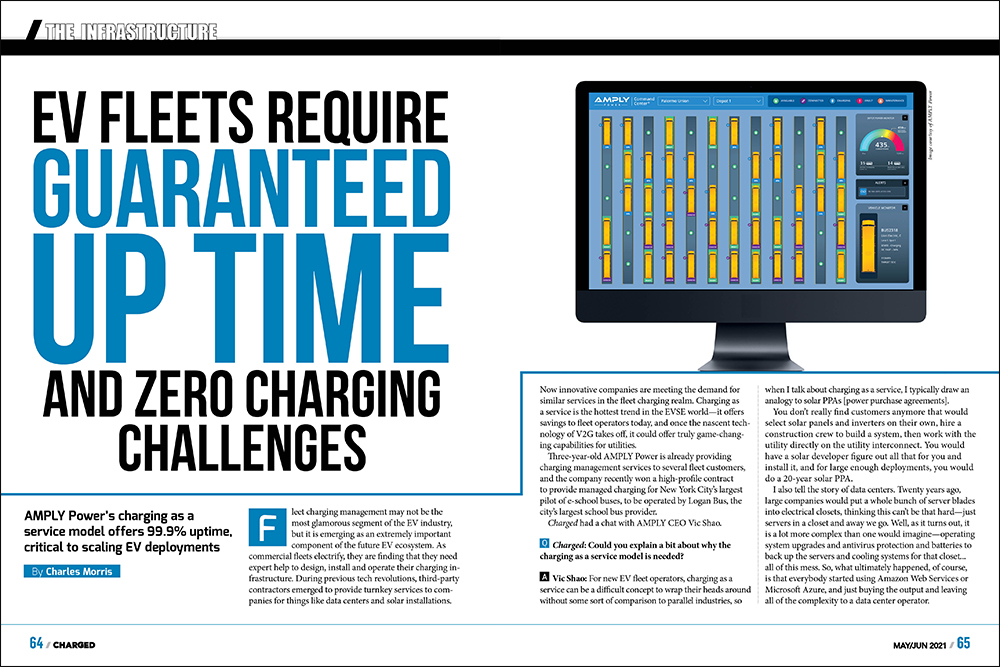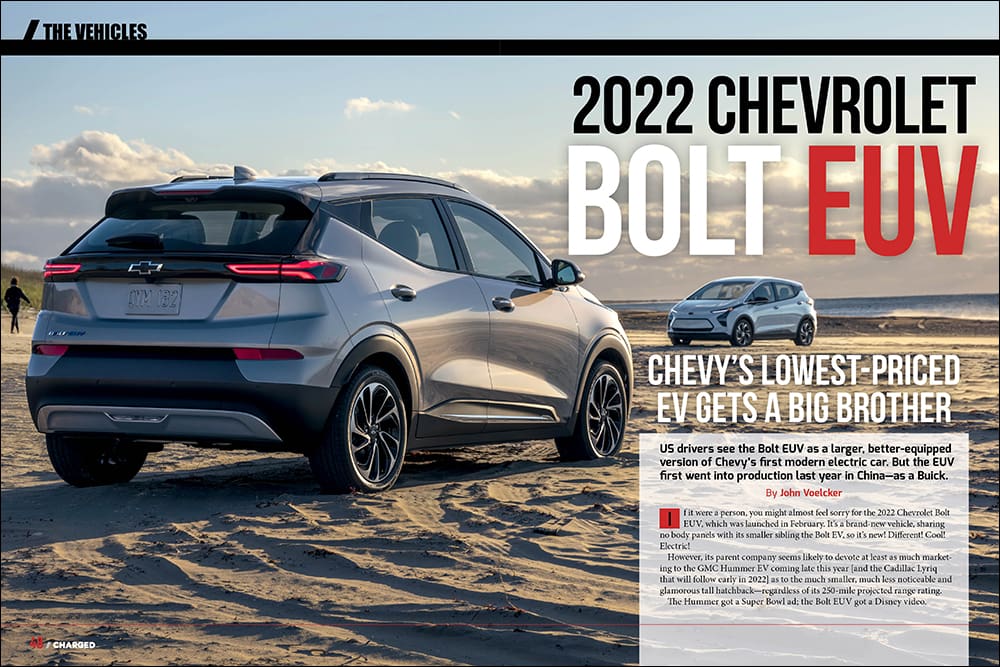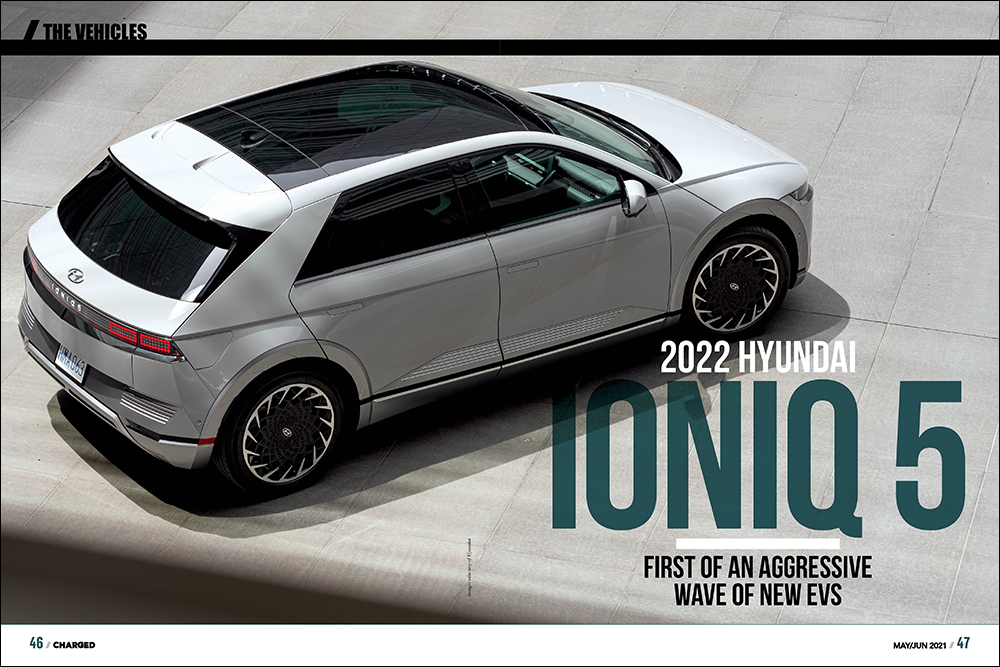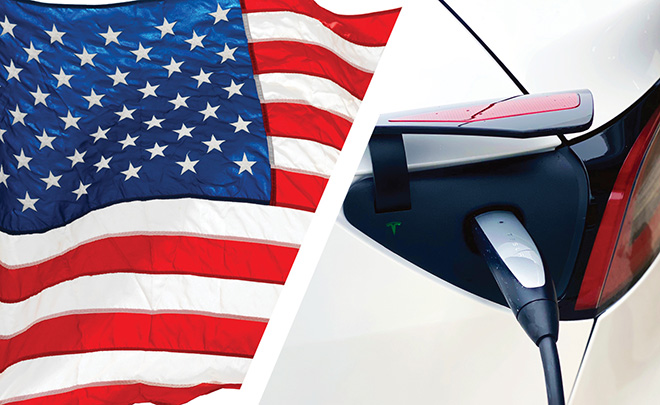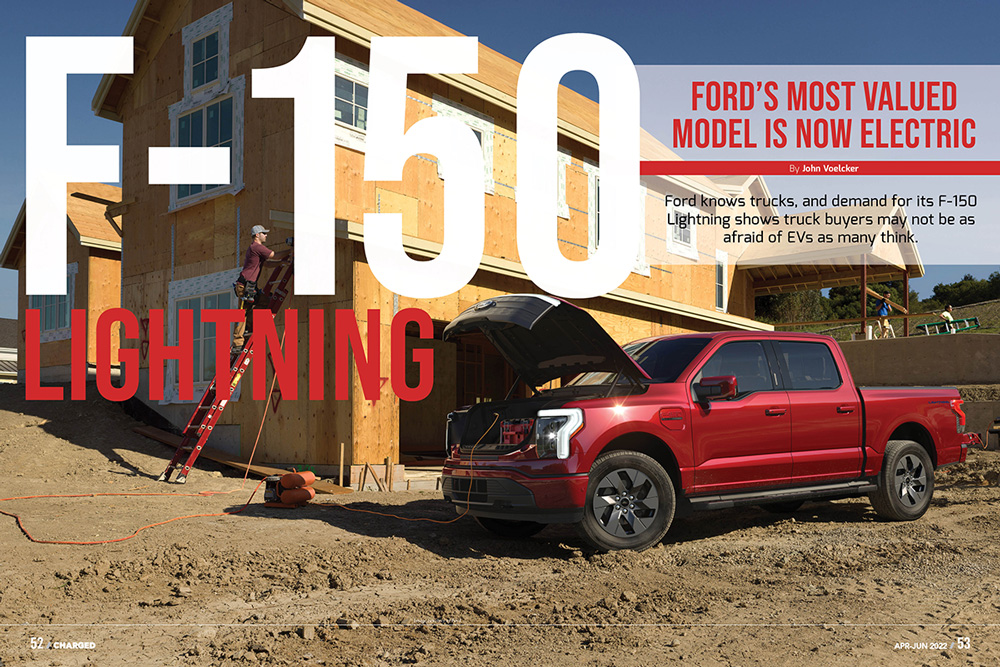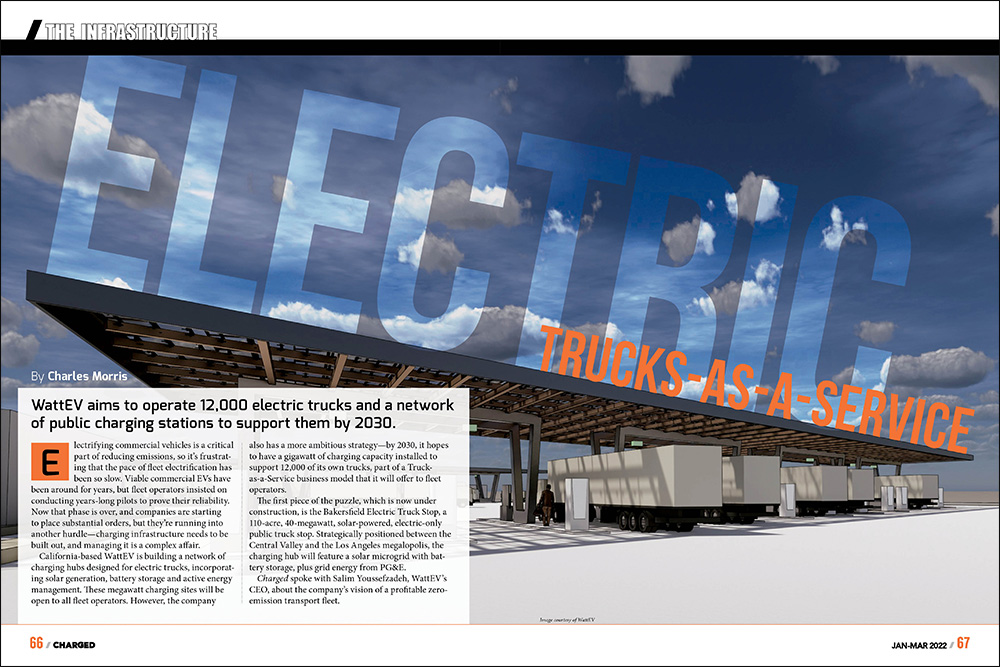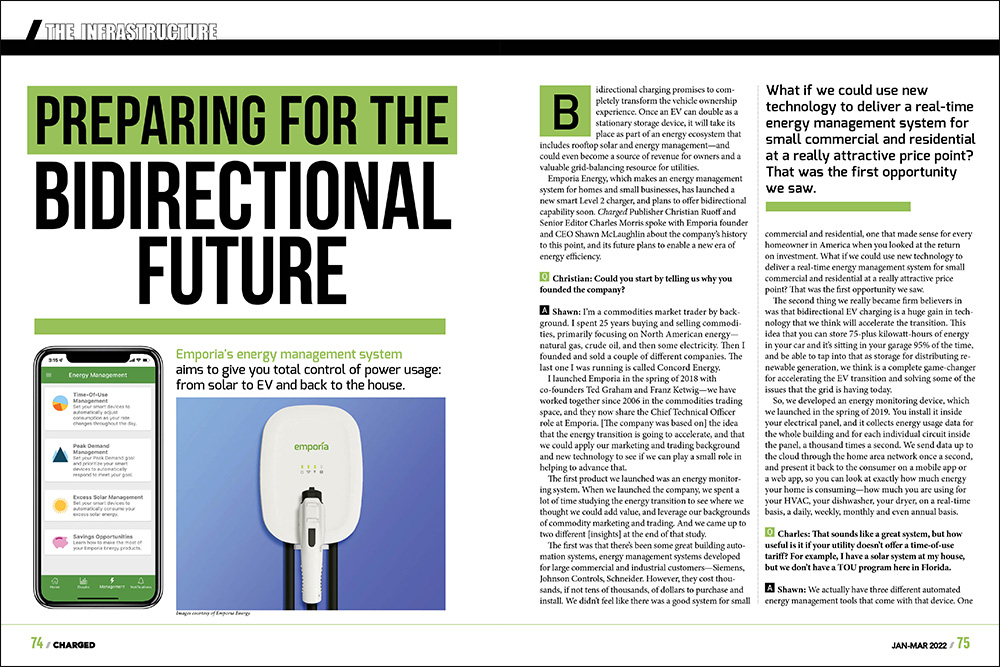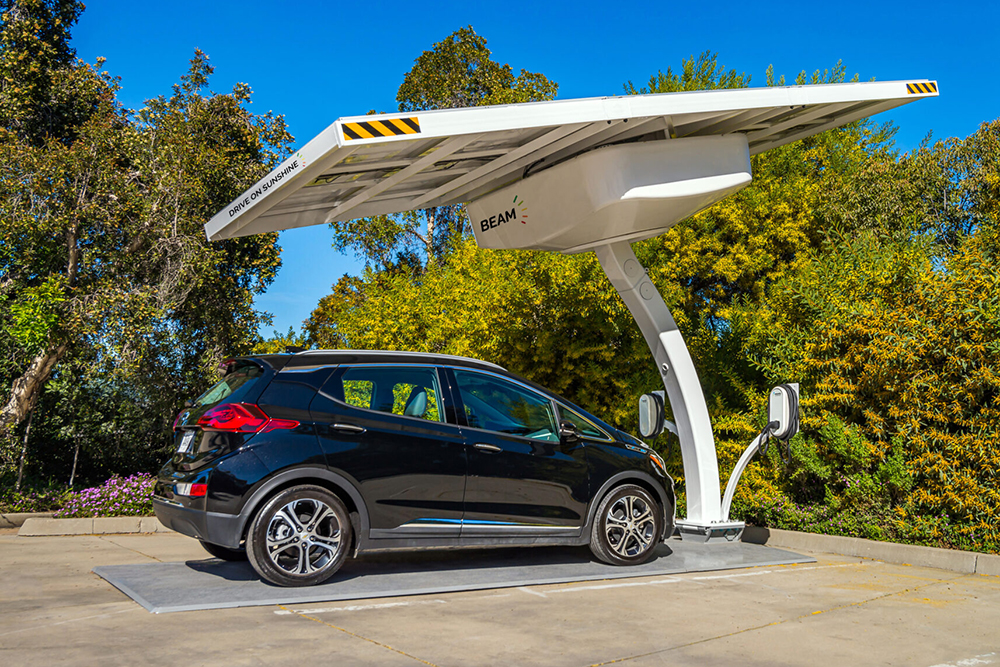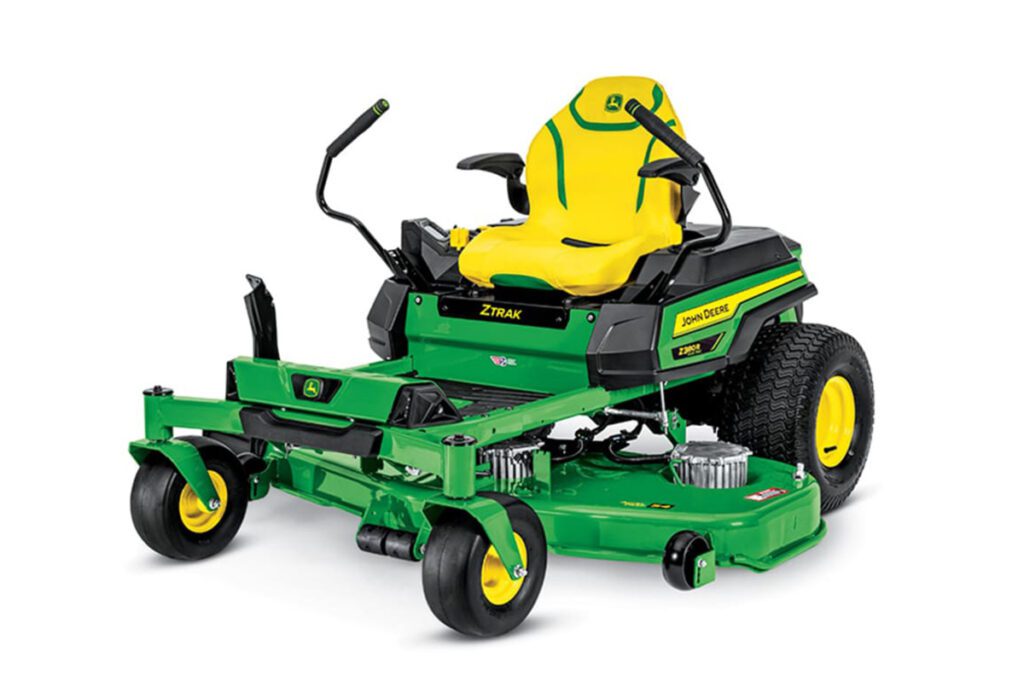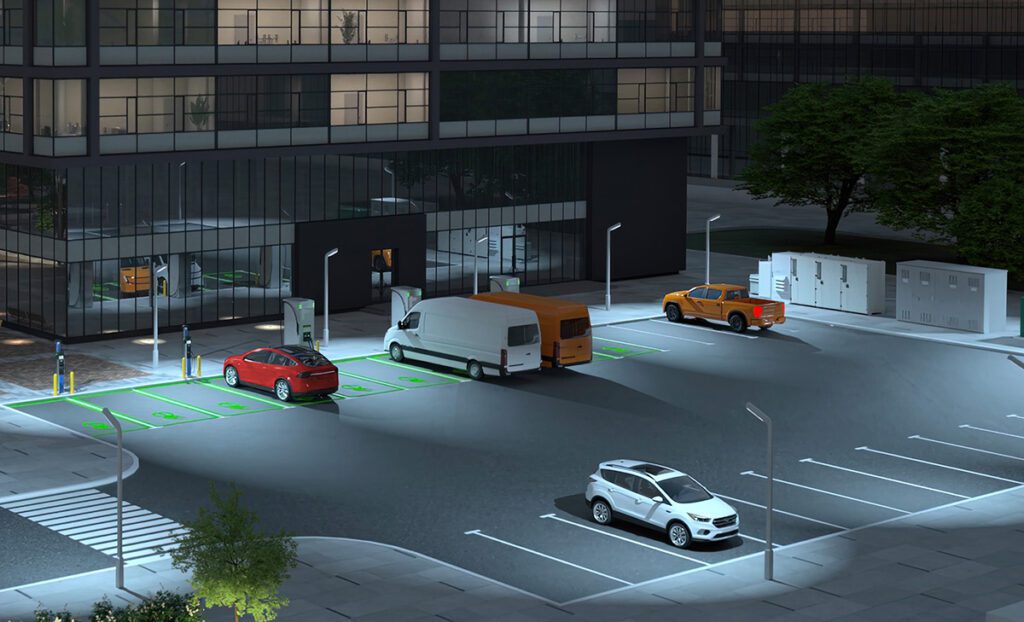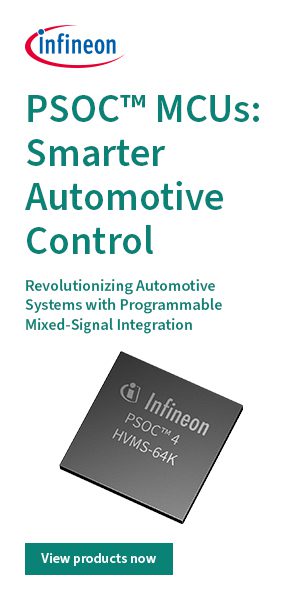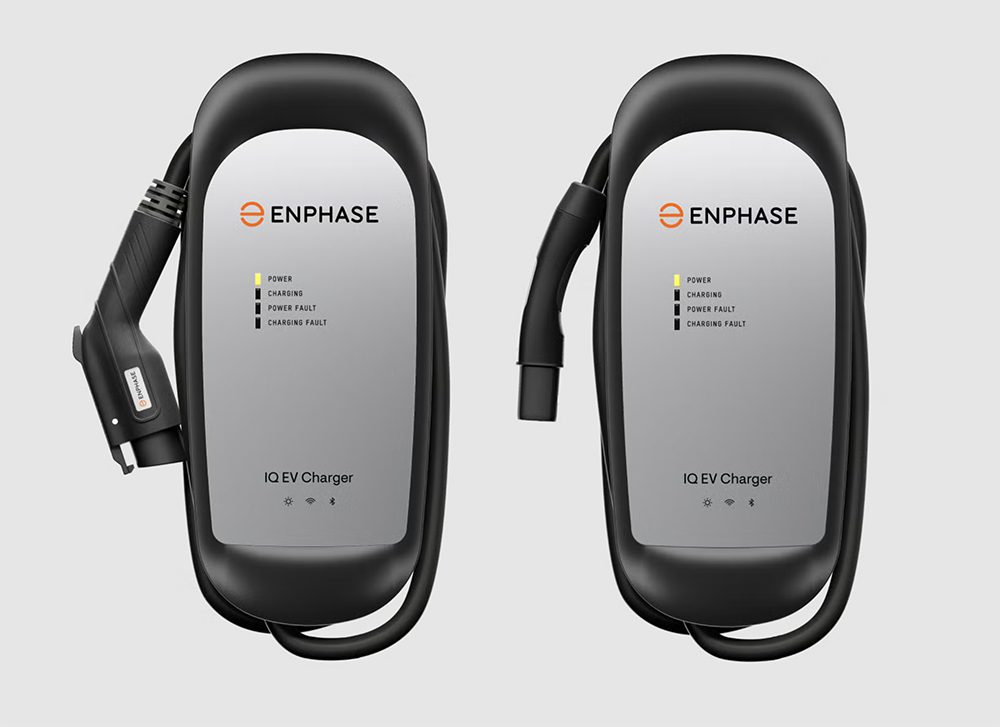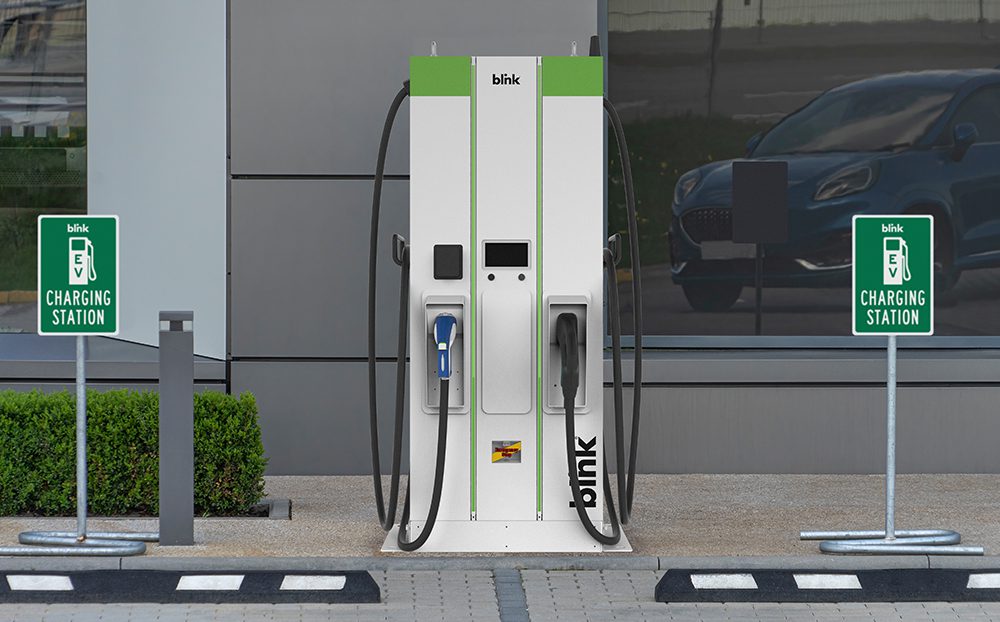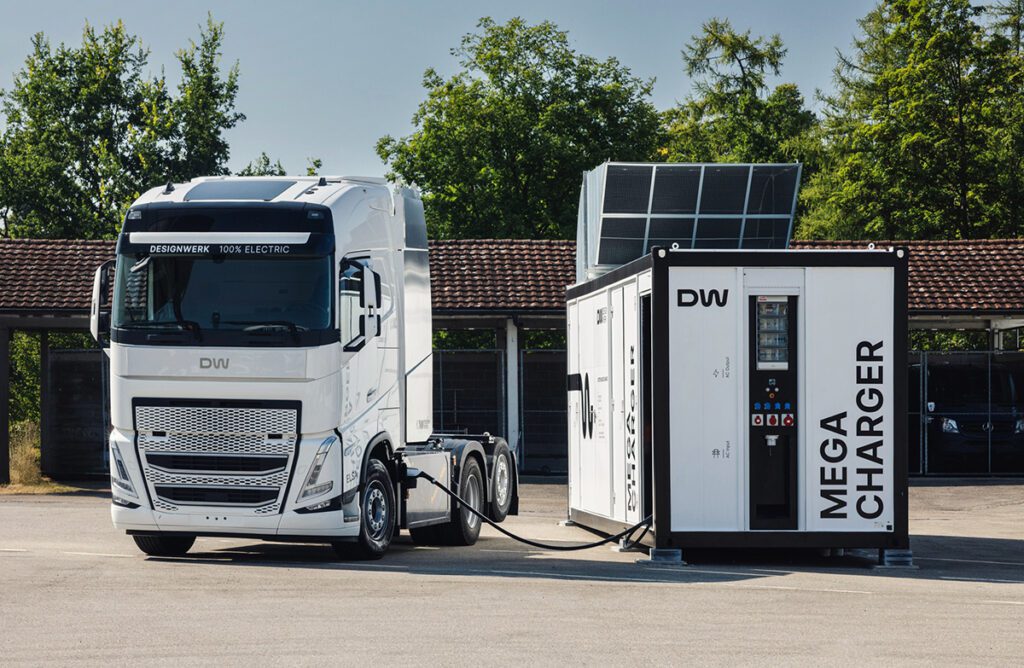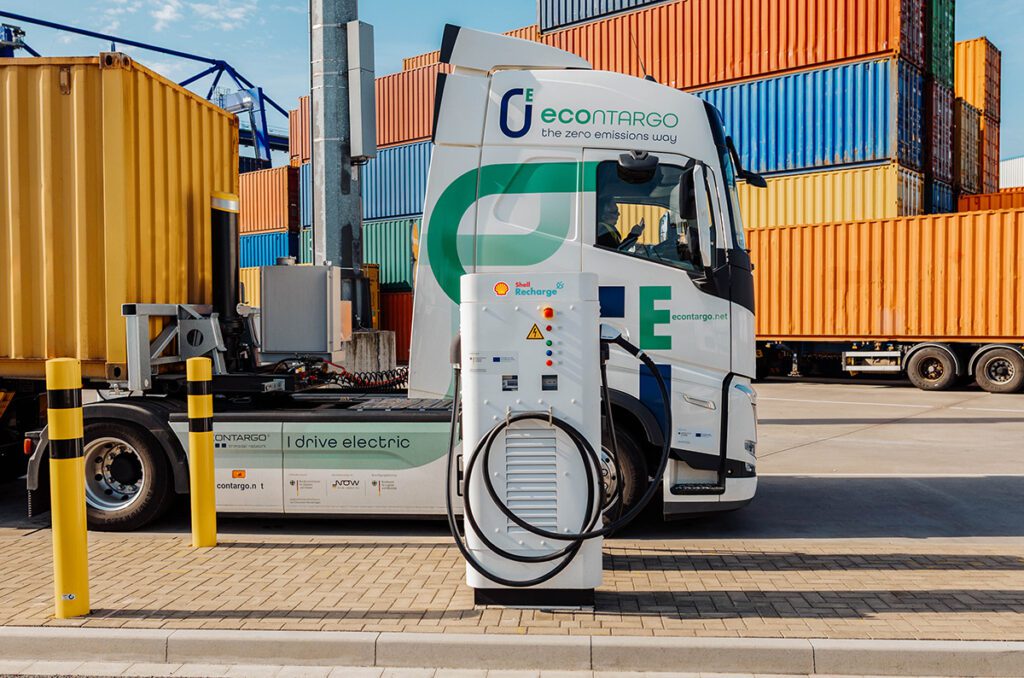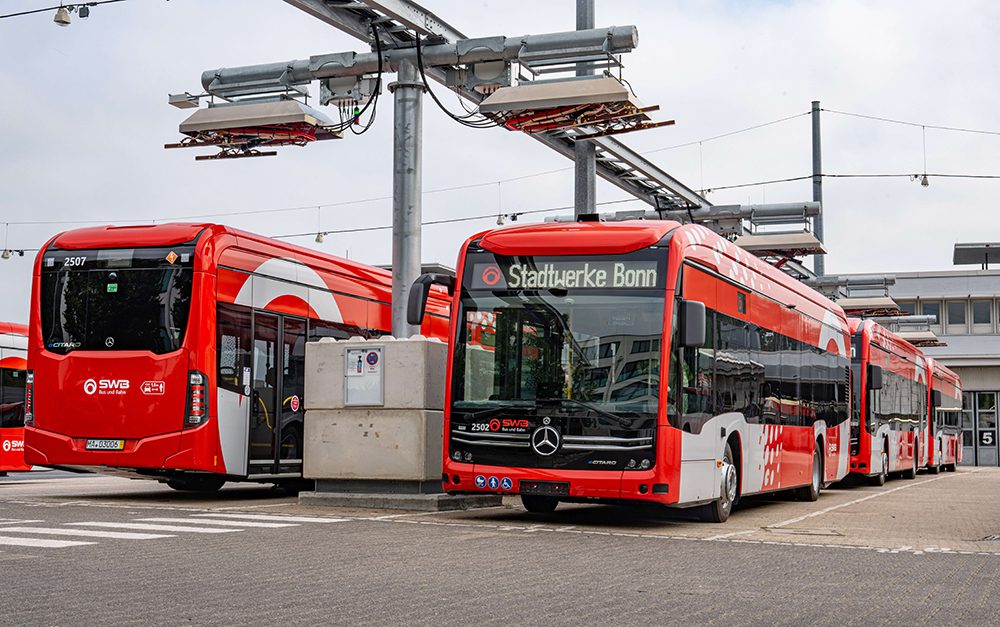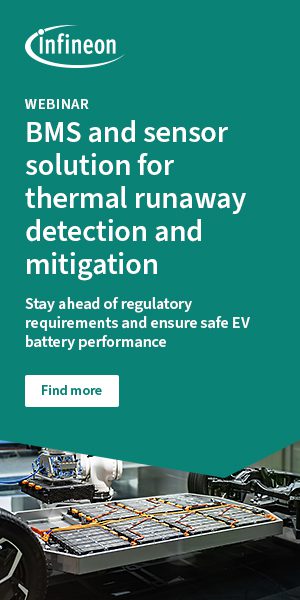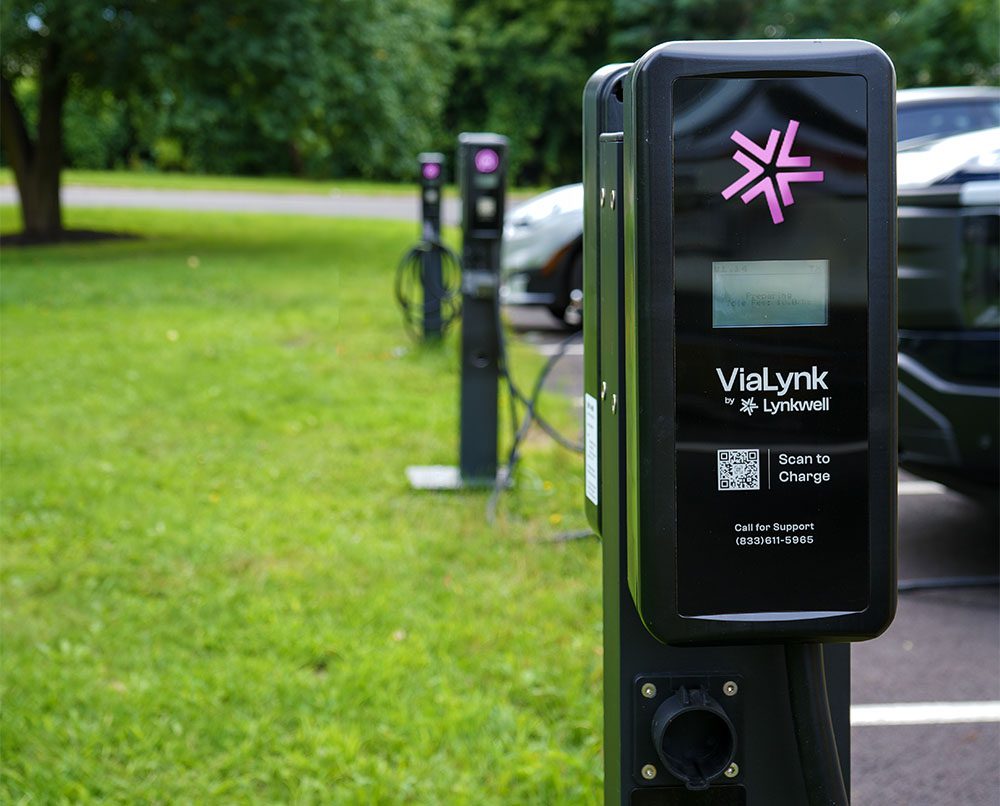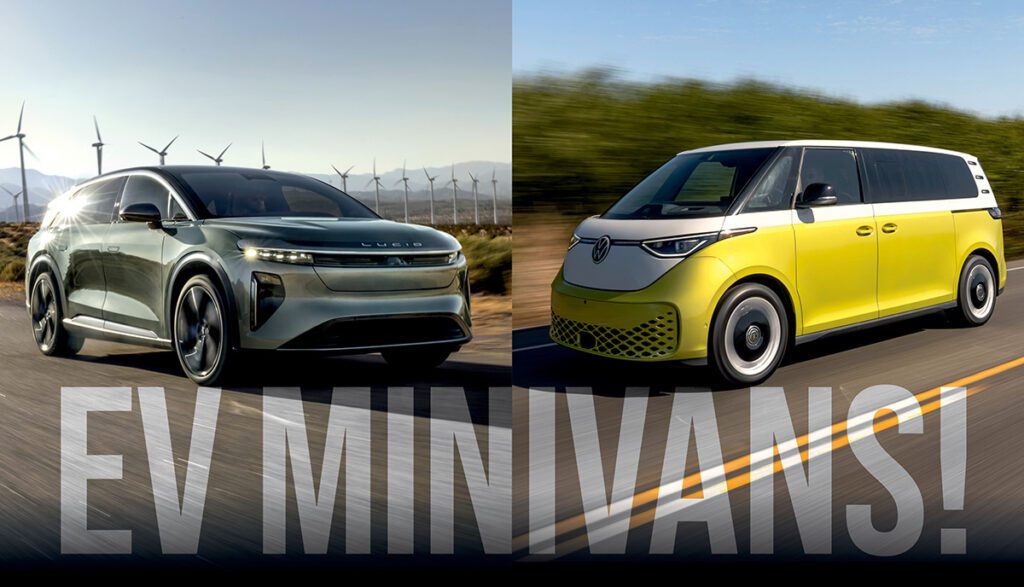The EV ecosystem is a work in progress, and when it comes to charging infrastructure, there are some key pieces missing from the puzzle. There will surely be a need for some form of portable charging on demand, and this is the niche that SparkCharge is looking to fill with its new app platform, BoostEV. The company’s modular, portable system—called the Roadie—is designed to make DC fast charging mobile. Now, EV drivers can order a charge at the push of a button on a smartphone app the way you might order a rideshare vehicle—anytime, anywhere.
SparkCharge co-founder and CEO Joshua Aviv spoke with Charged back in 2019, when the Roadie was in pre-production, and the company was working with prototypes. Now SparkCharge has deployed its system with the first wave of customers. A recent appearance on Shark Tank that ended in a deal with celeb investors Mark Cuban and Lori Greiner brought the company an avalanche of publicity.
In February, the company officially launched its new BoostEV platform in select cities—it’s now available in Austin, Boston, Chicago, Dallas, Los Angeles, New York City, Raleigh, Richmond, San Diego, San Francisco and Santa Cruz. Launch partners include Allstate Roadside, Spiffy and others who teamed up with SparkCharge to create a quick and convenient charging service that can deliver a portable Roadie charging system to any location the driver desires.
“When SparkCharge appeared on Shark Tank, I knew they were on the cusp of something game-changing, and this is it,” said Mark Cuban. “They have created a new, innovative EV charging infrastructure that eliminates the stress of range anxiety for all EV owners.”
Charged recently sat down with Joshua for an update on BoostEV, which he describes as “the app that lets electric vehicle owners charge their EVs anywhere with the click of a button—like UberEats or GrubHub for hungry EVs.”
Charged: Congratulations on graduating from the prototype phase into production. Tell us more about your new business model.
Josh: Now we’re in full production, we’re rocking and rolling. The factory in Buffalo is shipping out units every day now. That’s basically fully operational. We can ship thousands of units a year now.
When it comes to the business model, I think previously people saw us as a roadside use case, and while that’s true, BoostEV is not just roadside—it’s on-demand. It’s charging as a service, or CAAS. Anytime, anywhere, push a button, get range delivered. One of the things we realized as we were growing as a company, was that the way that people live, the way the technology grows, a lot of things end up in this convenience standpoint. For example, with Instacart, my grocery store now lives on my phone. With Uber, my chauffer lives on my phone. With Grubhub and DoorDash, my delivery guy lives on my phone. So we started out with this notion that we want the charging station to live on your phone now.
Almost every industry has gone with this convenience on-demand approach. And we said, “Well, we’re in the perfect position to do that for electric vehicles.”
We realized that we had this amazing core piece of technology, the hardware, the Roadie, and that if we wanted to really solve the problem of infrastructure, we needed to be able to get it in the hands of as many people as possible, as quickly as possible. We looked at the way that other industries have gone. Almost every industry has gone with this convenience on-demand approach. And we said, “Well, we’re in the perfect position to do that for electric vehicles.”
I remember the defining moment—we were talking to an EV owner and he said, “Every time I charge my car at a Supercharger or at another charging station,” it was a planned trip. “You have to plan your day, your journey around going there.” So we said, “How can we bring freedom back to EV ownership?” And the way to do that is to put that power back in the hands of EV owners to where now it’s not a planned experience. It’s not a planned part of your day. It’s “Hey, I’m literally pulling into work. I want an extra 100 miles, 50 miles.” I pull out my phone and I get it done. It’s now becoming as easy and simplistic as ordering food.
I want to be able to take my phone out, no matter where I am, and be able to push a button and have someone come charge my car. That’s why we started developing BoostEV, and we already had the technology to go along with it. So, it was a great platform for us to build out, and once we built it, people kind of resonated with it. 90% of our partner companies aren’t roadside service. They’re OEMs, they’re insurance, they’re utilities, they’re mom-and-pop companies. Some of the people that we work with that are covering these cities, previously, they were Uber Eats or Uber drivers, Lyft drivers, and they said, “Well, I can be delivering goods or delivering people, but now with BoostEV, I can start delivering range, delivering electricity to people.” So, we’ve had people join the platform and basically start a business delivering range instead of goods or services.
Charged: Can you tell us how the driver network and pricing system works?
Josh: Customers on BoostEV would be EV owners, but our partner companies that join BoostEV are businesses. The quickest analogy to think of would be: if you downloaded Grubhub or Uber Eats, you see a bunch of restaurants, you see a bunch of businesses. With us, it’s almost the same thing, except you’re seeing all these businesses that are now servicing EV owners and they’re delivering range.
We’ve got providers in about 12 cities right now. The app is live, so people can download the app and then actually start requesting the range on that day.
Each business sets their own pricing, and we’ve seen pricing go as little as 10 bucks per charge. Some will set a flat price, and some will do it based on distance. If you’re a hundred miles away from where they’re located, they may be a fee.
We don’t take any percentage of the fee and we don’t charge any of the businesses or the EV owners to join the app. It’s just pay-per-usage, no monthly fees or anything. We set it up to be exactly like you were ordering a burrito online. You just pay for what you need.
Our goal is to be the fastest-growing EV network in the country. With regular charging stations, or what we like to call legacy infrastructure, you have to get the permits, do the RFP, do the construction, put the pole in the ground, get it set up, order the utility, yada, yada, yada. With us, it’s basically take it out of the box, plug it in.
And we can be in any city that a business wants to operate in. So, right now, if you said, “Well, Josh, how quickly can you expand to the Tampa/St Pete, Florida area?” If Charged wanted to service EV owners in the Tampa Bay area (the location of Charged HQ), I could have your unit tomorrow, and then Tampa Bay is on the map. Now Tampa Bay EV owners can start getting range delivered.
The plan is to add new cities monthly, and our goal is to be solidly in about 20 to 25 cities by the end of this year. Anyone can request to start an area. We go through a vetting process—we’re trying to figure out how many EVs are in that area to decide whether you have enough demand, but any business can request to start operating in an area.
Basically, once you have the equipment, you’re on the network. You can start delivering range to anybody in that area.
Charged: So for example, say I have a towing business and I want to sign up, what’s the process like? Do I buy the equipment? Do I lease it from you? How’s that work?
Josh: You can buy, lease, or finance the equipment from us. Basically, once you have the equipment, you’re on the network. You can start delivering range to anybody in that area.
Charged: It’s a scalable unit, so how many stackable battery packs do you think a provider will have?
Josh: We have people who go all out—they have roughly 12 units that they’re deploying on multiple fleets across a city. If you’re a tow-truck company, you’ve probably got at least two or three different trucks driving around. And then we have your mom-and-pops that are out there with maybe five or six units rolling around and servicing EV owners.
Charged: The last time we talked, the hardware had a CHAdeMO connector, and you were using the Tesla adapter for Teslas. Is that still what you’re working with?
Josh: Yes, that’s what we’re working with at the moment. Servicing Teslas, Nissans, a couple of Mitsubishis sprinkled throughout there.
Charged: What do you think will be the common use cases?
BoostEV is not roadside-focused. If you run out of range, you can definitely have it delivered via BoostEV, but this really is an on-demand charging-as-a-service platform. It’s meant to be able to charge an EV whenever you want it—at home, at the grocery store, outside of Starbucks, when you’re at the mall, sitting on your couch in your living room. “Hey, Alexa, charge my car 50 miles.” Someone comes and shows up in your driveway. We’re really focusing this on convenience charging. Yes, we work with roadside companies, but BoostEV is not a roadside-focused app.
BoostEV is not roadside-focused. If you run out of range, you can definitely have it delivered via BoostEV, but this really is an on-demand charging-as-a-service platform.
For example, you’re at the grocery store and you say, “I’m going to be in here for at least 30 minutes to an hour,” push a button on your phone and when you come out from the grocery store, you’ve got your range. I’m going into a mall, need to charge the car. I’m visiting a friend, they don’t have a charger at their house, push a button, it comes to me. I’m at work, they don’t offer charging, push a button, it’s already there, go out, it’s done.
One of the things when companies talk to us is, “Well, the problem with legacy infrastructure is if I install one charging station, I can charge one car. Maybe I can charge two if I have two nozzles.” The moment a second or third car shows up, there’s a wait. Now I’ve got to install more poles. Now I’ve got to take up more space. With BoostEV, every parking spot, every location, is a charging station. We’re going to start working with cities, so you could be at Times Square and park your car on the street, scan a QR code on the pay meter, and now that’s a charging station, someone’s coming to charge your car.
Literally anywhere you drive your car, anywhere you park your car, that is now a charging station—that’s the power of BoostEV. A network that’s on demand and lives on your phone. There is no need for that legacy infrastructure. You can park your car and charge your car.
Charged: Give me a quick recap of the hardware. What’s the typical charging speed, and how much energy storage can you get per stackable unit?
Josh: Charging speed, you can get one mile every 60 seconds. So we’re DC fast charging at 20 kilowatts. The average provider’s carrying around at least 50-plus miles of range. So, on average, you can go anywhere from 10 miles all the way up to a hundred if you need it. It’s portable and you can literally fit it in your trunk.
Charged: Tell me a bit about the Shark Tank experience. What was that like?
Josh: We applied in January, filmed it in August, and we were blessed to be on the season premiere in October—talk about a whirlwind experience. To get two sharks has been extremely gratifying, extremely helpful. Working with Mark Cuban has been absolutely amazing. Working with Lori has been absolutely amazing.
I think everybody has an interesting experience going on the show, but ours has been overwhelmingly positive. For us, it was really gratifying because when we went on the show, we told them we want to bring electric vehicles into the millions of houses that Shark Tank reaches. We want to start that conversation. And not only do we want to start that conversation, but we want to have that conversation around tearing down barriers to EV adoption, and I think we did a really good job of that. 3.6 million people tuned in that night, and I think we’ve had another 4 million that have shown up through social media, watching the YouTube reruns, the Instagram shares. Almost every day we get hit up, someone’s like, “I saw you on Shark Tank. I saw you on TV. I saw you on Facebook.” It just never ends. So it’s been a huge positive outpouring that we’re blessed to take part in.
This article appeared in Charged Issue 54 – March/April 2021 – Subscribe now.






